- Interesting
- Scholarships
- UGC-CARE Journals

Top 75 Emerging Research Topics in Electrical Engineering
Discover the cutting-edge frontiers of electrical engineering with our comprehensive list of the Top 75 Emerging Research Topics
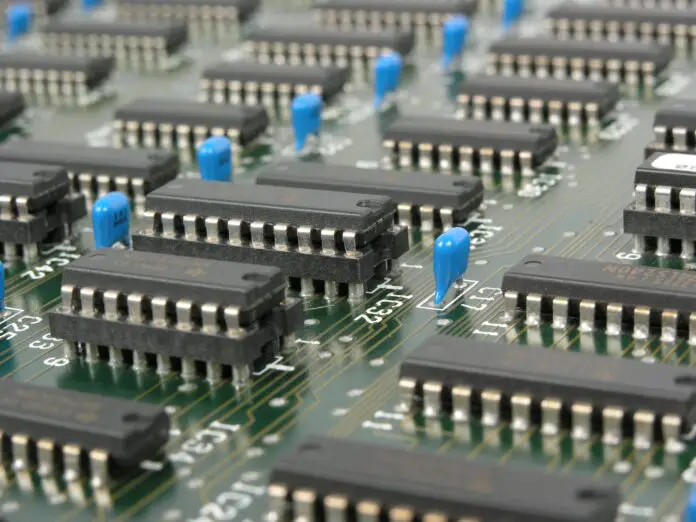
Table of contents
1.1 smart grids and micro-grids, 1.2 energy harvesting and storage, 1.3 electric vehicles and transportation, 2. communications and networking, 2.1 5g and beyond, 2.2 iot and wireless sensor networks, 2.3 satellite and space communications, 3.1 autonomous systems, 3.2 biomedical and healthcare robotics, 3.3 machine learning and control, 4.1 nano-electronics and quantum computing, 4.2 flexible and wearable electronics, 4.3 neuromorphic engineering and brain-computer interfaces, 5.1 sparse signal processing, 5.2 explainable ai and interpretability, 5.3 adversarial machine learning and security.
In the ever-evolving realm of Electrical Engineering, innovative research continually drives the field’s progression, shaping our future technologies and solutions. As we step into an era dominated by AI, IoT, renewable energy, and more, the scope for innovative research widens. In this article, iLovePhD listed the top 75 emerging research topics in the field of Electrical Engineering.
1. Power Systems and Renewable Energy
a. Distributed control strategies for micro-grid management.
b. Blockchain applications for secure energy transactions in smart grids.
c. Resilience and robustness enhancement in smart grid systems against cyber threats.
d. Integration of renewable energy sources in micro-grids.
e. AI-based predictive maintenance for smart grid components.
a. Next-gen battery technologies for energy storage systems.
b. Wireless power transfer and energy harvesting for IoT devices.
c. Super-capacitors and their applications in renewable energy storage.
d. Materials research for efficient energy conversion and storage.
e. Energy-efficient architectures for IoT devices powered by energy harvesting.
a. Charging infrastructure optimization for electric vehicles.
b. Vehicle-to-grid (V2G) technology and bidirectional power flow.
c. Lightweight materials and design for electric vehicle batteries.
d. Autonomous electric vehicle technology and its integration into smart cities.
e. Energy-efficient route planning algorithms for electric vehicles.
a. AI-driven optimization for 5G network deployment.
b. mmWave communication technologies and their implications.
c. Quantum communication for secure and high-speed data transfer.
d. 6G technology and its potential applications.
e. Edge computing and its role in 5G networks.
a. Energy-efficient protocols for IoT devices.
b. AI-enabled edge computing for IoT applications.
c. Security and privacy in IoT data transmission.
d. Integration of AI with IoT for intelligent decision-making.
e. Communication challenges in massive IoT deployment.
a. Low Earth Orbit (LEO) satellite constellations for global connectivity.
b. Inter-satellite communication for improved space exploration.
c. Secure communication protocols for space-based systems.
d. Quantum communication for secure space-based networks.
e. Space debris mitigation and communication systems.
3. Control Systems and Robotics
a. AI-driven control for autonomous vehicles and drones.
b. Swarm robotics and their applications in various industries.
c. Human-robot collaboration in industrial settings.
d. Autonomous navigation systems for underwater vehicles.
e. Control strategies for multi-agent systems.
a. Robotics in surgical procedures and rehabilitation.
b. Wearable robotics for physical assistance and rehabilitation.
c. Robotic prosthetics and exoskeletons for enhanced mobility.
d. Telemedicine and remote healthcare using robotic systems.
e. Ethics and regulations in medical robotics.
a. Reinforcement learning for control system optimization.
b. Neural network-based adaptive control systems.
c. Explainable AI in control systems for better decision-making.
d. Control strategies for complex systems using deep learning.
e. Control system resilience against adversarial attacks.
4. Electronics and Nanotechnology
a. Quantum-resistant cryptography for future computing systems.
b. Development of reliable qubits for quantum computers.
c. Quantum error correction and fault-tolerant quantum computing.
d. Nano-scale transistors and their applications.
e. Hybrid quantum-classical computing architectures.
a. Stretchable electronics for wearable applications.
b. Smart textiles and their integration with electronic components.
c. Biocompatible electronics for healthcare monitoring.
d. Energy harvesting in wearable devices.
e. Novel materials for flexible electronic devices.
a. Neuromorphic computing for AI and cognitive systems.
b. Brain-inspired computing architectures and algorithms.
c. Non-invasive brain-computer interfaces for diverse applications.
d. Ethics and privacy in brain-computer interface technology.
e. Neuroprosthetics and their integration with neural interfaces.
5. Signal Processing and Machine Learning
a. Compressive sensing for efficient data acquisition.
b. Sparse signal reconstruction algorithms.
c. Sparse representations in machine learning.
d. Deep learning for sparse signal recovery.
e. Applications of sparse signal processing in various domains.
a. Interpretable machine learning models for critical applications.
b. Explainable deep learning for decision-making.
c. Model-agnostic interpretability techniques.
d. Human-centric AI and its interpretability.
e. Visual and intuitive explanations in machine learning models.
a. Robust deep learning models against adversarial attacks.
b. Adversarial machine learning in cybersecurity.
c. Detecting and mitigating adversarial attacks in AI systems.
d. Secure and private machine learning protocols.
e. Ethical considerations in adversarial machine learning.
As technology continues to redefine boundaries and explore new horizons, these research topics in Electrical Engineering stand at the forefront, ready to shape the future of our world. The amalgamation of these fields showcases the diversity and depth of possibilities waiting to be unlocked by the curious minds and diligent efforts of researchers and engineers in the years to come.
- Advanced sensors
- AI Applications
- AI in robotics
- Autonomous vehicles
- Brain-machine interfaces
- Cognitive radio
- Electric vehicles
- Electrical engineering research
- Electroceuticals
- Electromagnetic compatibility
- Electronic design automation
- Electronics advancements
- Emerging research topics
- Energy efficiency
- Energy forecasting
- Energy storage
- Grid stability
- Health technology
- HVAC systems
- IoT devices
- Microgrid technology
- Molecular electronics
- Nanoelectronics
- Power systems
- quantum computing
- Quantum cryptography
- Quantum internet
- Remote Sensing
- renewable energy
- Smart buildings
- Smart grids
- Smart grids cybersecurity
- Speech and audio processing
- sustainable manufacturing
- Terahertz electronics
- VLSI design
- Wearable technology
- Wireless protocols
10 ideas to get 10x more Google Scholar Citations
What is a research design importance and types, indian council of social science research calls for collaborative research project, email subscription.

iLovePhD is a research education website to know updated research-related information. It helps researchers to find top journals for publishing research articles and get an easy manual for research tools. The main aim of this website is to help Ph.D. scholars who are working in various domains to get more valuable ideas to carry out their research. Learn the current groundbreaking research activities around the world, love the process of getting a Ph.D.
WhatsApp Channel
Join iLovePhD WhatsApp Channel Now!
Contact us: [email protected]
Copyright © 2019-2024 - iLovePhD
- Artificial intelligence

- [email protected]
- +91-97 91 62 64 69
Research PhD Topics in Electronics and Communication Engineering
Electronics and communication is the branch of engineering science that is intended to control electron streams in an electrical circuit by rectification and amplification functionalities whereas classical electrical engineering uses the inductance & capacitance to control electron streams (current flow). In short, it is one of the thriving technologies in the recent technical eras. “We are presenting you the most expected pioneering article which is all about PhD topics in electronics and communication engineering”
Electronics and communication engineering is comprised of so many irreplaceable components. The main objective of this article is to make your thoughts provoke a different perception of curlicue electronics technology. We are dedicating our indispensable efforts to this article to electronics enthusiasts. You can also become a master in these areas by paying your kind attention throughout the article. Now let us begin to focus on the core areas.
Overview of Electronics and Communication
Electronic components are the entities which are interpreting electron flows in every electronic mechanism. These components are interconnected with the printed circuit boards to generate oscillator, receiver & amplifier-based electronic circuits. Electronic components such as,
- Transistors
These components are usually integrated with complex digital circuits. Advancements in digital electronics are cannot be fingered in numbers. For example, digital watches, traffic signals, and supercomputers are the best instances of digital electronic circuits. In this regard, let us look into the modern evolution of digital electronics.
Evolution of Digital Electronics
- Transparent Latch & Truth Tables
- State Machines & Sequential Logic
- Logic Synthesis & Simulation
- Karnaugh Maps & Formal Verification
- Digital Circuits & Counters
- De Morgan’s Laws & Boolean Algebra
- Combinational Logic & Binary Decision Diagrams
- Schmitt Triggers & Multiplexers
- Registers & Counters
- Flip-Flops, Logic Gates & Adders
- Metal-Oxide-Semiconductor Field-Effect Transistor
- Field-Programmable Gate Array
- Digital Signal Processor & Memory Chip
- Application-Specific Integrated Circuit
- Microcontrollers & Microprocessors
The above listed are the various branches in which electronic engineering is contributed their vital functionalities to enhance them. As this article is titled with the PhD topics in electronics and communication engineering, we would like the mention the research areas of the same at the beginning itself for the ease of your understanding.
Research Areas in Electronics and Communication Engineering
- Instrumentation & Control Engineering
- Telecommunications Engineering
- Automation & Robotics
- Data Science & IoT
- Embedded Systems & Engineering
- Signal Processing & Communication Systems
- Wireless Communication Technology
- Optoelectronics, Microelectronics & Bioelectronics
- Electronic & Microwave Engineering
- Electrical & Computer Science Engineering
- Information & Communications Processing
- Computer Technology & Digital Circuits
These are the diverse research areas heading their paves and offering so many opportunities to explore more. These technologies are making other models stronger by the application of their significant features in every technique comprised it.
You can make use of our technical team’s assistance here for brainstorming about how electronics and communication engineering is going to help your selected areas of research. In this sense, we could gear up our directions into the next section.
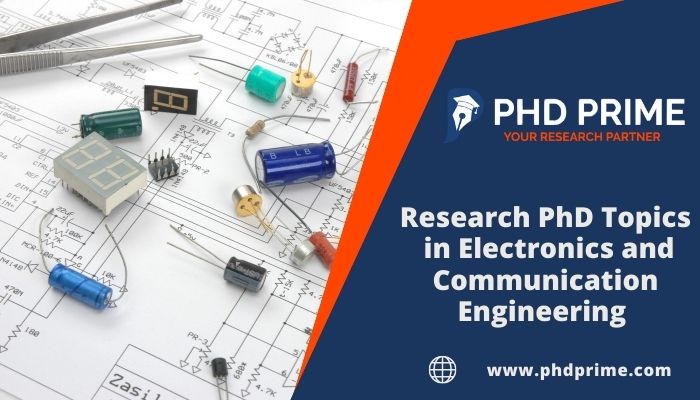
What are the Different Models that benefitted from Electronics and Communication Engineering?
- Heart Beat Monitor
- Plasma Antenna Technology
- Pass-Transistor Dual Value Logic for Low-Power CMOS
- Markov and Hidden Markov Models
Itemized above are the 4 major models which are benefited from electronics and communication engineering in general. We know that it would be really helpful to beginners by explaining these systems. Hence, we are going to make the next section with their corresponding explanations.
- Heartbeat monitors are using IR Receiver (Rx) & IR Transmitter (Tx) by taking biometric inputs from index fingers in the medical field
- A metal element in an electronic system is substituted by plasma antenna which engages ionized gas into the tubes
- Further, it allows radio frequency to transmit signals over the medium when ionized gas charged
- The antenna element will have flopped if ionized gas is not charged as well as voltage application is enabling electrons to flow in a circuit
- Portable devices are in needing very high throughput & low power consumption in every process
- It is highly resulted in designing high-density VLSI chips to ensure several requirements of portable devices
- Markov models are tackling pattern recognition complexities by the application of electronics engineering
- These models are widely used to examine genes, promoter entities, CpG, RNA & as well as DNA patterns
This is how these mentioned models are getting benefited by electronics and communication engineering in real-time. Our researchers in the institute are smart and intellectual individuals who are spontaneously skilled.
They are interacting and encourage the students utilizing directing them to technical areas which are going to help them to grab their dream career opportunities. Right now, we would like to add up some peppers here about how electronics and communication engineering work in general with clear handy notes.
How Does Electronics and Communication Engineering Work?
- Polarization Module & Lightweight Broadband Antenna
- Synthetic aperture radar sensors are powered by the transversal electromagnetic & logarithmic-periodic dipole broadband antennas
- Unmanned aircraft vehicles are placed with broadband antennas and estimated according to the weight, radiation pattern pulse response & matching
- Wideband Microwave Power Module
- It is the integrated module of vacuum tube & solid-state electronics that is aimed to increase (amplify) radio frequency signal levels
- As well as they are enfolding EPC, TWTA & SSPA within the solitary unit and they are widely used in,
- Military & Defense Satellite Communications
- Dynamic Phased Array of Antennas
- Synthetic Aperture Radars & Transmitters
These are 2 modules mainly involved in the working process of electronics and communication engineering. In fact, without wideband and lightweight broadband modules, the electronic system cannot execute its processes in a better manner.
At this time of the technical era, so many trends are injected into electronics and communication engineering technology. Yes, we are going to let you know some interesting current trends presented in the same technology for making your perceptions wise.
Current Trends in Electronics and Communication Engineering
- This technology is vigorously involving with communication antennas research
- It is transmitting data over the infrared lights in a bidirectional way
- Enlarges the bandwidth and network speed by multiplying 4G, 3G & Wi-Fi
- It allows the digital users to connect with the internet and smart devices
- It can connect with longer cables and allows to access other electromagnetic generators
- This technology is making supercomputers with human analytical skills
- For interacting with humans (as human interaction with other individuals)
- Used in the airlines for communicating with broadband & wireless narrowband
- Microchips in Gi-Fi offer multi-gigabit data transmission with short-range
The foregoing passage has revealed to you some of the current trends in electronics and communication engineering. Researching is an art and not everyone is Picasso of it. However, you can become a master in research by continuously putting in your hard work.
In the following passage, we have wrapped several exciting PhD research ideas in electronics and communication engineering for your valuable consideration. Shall we get into that section? Come on!!! Let’s grab them.
Research Ideas for Electronics and Communication Engineering
- Urban Area based 5G Communication Networks
- MEMS Sensors & Systems
- Nano Devices with Microchips
- Software-Defined Wireless System Evaluation
These are the innovative research ideas that can be further explored with the help of skilled developers and researchers. When doing PhD studies, you need to choose the exact research topic in which you are strong.
Many scholars are failing to select the correct research topic. For this, you can avail our mentors’ assistance freely to know about trending electronics and communication engineering journals list . Students are given various options such as they can choose one of the given topics or they can even choose topics as per our technical crew’s instructions.
To be honest, we are suggesting every student handpick the latest topics in emerging technologies with phd thesis writing services . Here is a tip for you! Try to make questions on the issues that arise in your research topic and make the interesting issues to frame your PhD topics. In this regard, we wanted to mention the latest topics in electronics and communication.
What are the Latest Topics in Electronics and Communication?
- Infrared Communications
- VLSI Implementation by OFDM
- WLAN in Automated Vehicles
- corDECT Wireless in Local Loop System
- Wearable & IoT Computing
- Linux Clusters with Parallel File System
- Digital Image Processing
- Speech Recognition
- Visible Light Communication
- Smart Sensors
- Communication Channel Testing
- IR & RF Waveforms Experimentations
- Integrated Back Haul & Front Haul Systems
- Testing Samples on Signals
- Simulating Interfaces in Hardware
- Application of CRO in Active Frequency of Output
- Testing using Antenna, Radar & Sonar
Here CRO stands for Cathode Ray Oscilloscope. These are some of the possible topics in electronics and communication engineering. As our technical team is concerned with the student’s understanding, they are always lending their helping hands to them by means revealing every aspect of research. Hence, they would also like to highlight some simulation tools used in electronics and communication engineering technology.
Simulation Tools for Electronics and Communication
- Matlab or Simulink
- NS 2 or NS 3
The aforementioned are some of the simulation tools used in electronics and communication engineering. As our researchers concentrated on the student’s welfare, we wanted to explain at least one of the listed simulation tools for paving your understanding better. That is none other than, that we are going to illustrate how to simulate IoT devices using the COOJA simulator .
How to Simulate IoT Devices using COOJA Simulator?
- IoT is the intellectual and embedded system in which sensors, interfaces, hardware, and software are interconnected to exchange data
- Contiki system of wireless sensor networks are simulated by the COOJA’s Contiki Mote and they are controlling the whole architecture
- Contiki Mote compilers are performed as a load and sharing library in Java programming languages
This is how the IoT devices are simulated by the COOJA simulator. Apart from this, signals in IoT devices are significantly stimulated by Matlab tools. Do you know, How to simulate signal processing using Matlab? If you don’t know! Don’t cringe. We are going to illuminate you the same in the immediate section.
How to Simulate Signal Processing using Matlab?
- Primarily, Matlab is acquiring raw signals and then they are analyzing, preprocessing and extracting features in it
- Matlab tools are dynamically performing power spectrum evaluation, smoothing, & resamples filtered signals
- Particularly, they are very competent in extracting signal patterns and their similarities
- Even they are capable in measuring SNR oriented signal misrepresentations
- Matlab is using signal analyzer application to analyze and preprocess the various signals instantaneously without scripting any codes
- In addition, they are facilitating the users to customize the digital filters with the help of filter design application
This is how the signal processing in IoT devices is simulated under the Matlab tool. We are concerned with dynamic researchers who are showcasing their indispensable contributions to make the research paper’s quality with high standard levels.
Our experts have engaged them in various activities. One among them is reading habit. Yes, we habitually read and examine top journals published with every phase of technology (for example robotics journals list ). In addition, we are also suggesting you, people, read journals at least periodically. Finally, we would like to highlight some of the latest and emerging technologies in electronics and communication engineering.
What are the Latest Technologies in Electronics and Communication?
- Smart & Intellectual Energy Systems
- Computerized Industries
- Robotics & Automation
- Self-directed Drone Mechanisms
- Man-less Driving Systems
So far, we have come up with the essential areas of PhD topics in electronics and communication engineering and other concepts. Are you wondering about this technology? There are so many interesting fields that are yet too said. If you are interested in knowing about them, then you can feel free to approach our academics at any time.
“Let’s sow your interesting ideas today and yield incredible results tomorrow”

Opening Hours
- Mon-Sat 09.00 am – 6.30 pm
- Lunch Time 12.30 pm – 01.30 pm
- Break Time 04.00 pm – 04.30 pm
- 18 years service excellence
- 40+ country reach
- 36+ university mou
- 194+ college mou
- 6000+ happy customers
- 100+ employees
- 240+ writers
- 60+ developers
- 45+ researchers
- 540+ Journal tieup
Payment Options

Our Clients

Social Links

- Terms of Use

Opening Time

Closing Time
- We follow Indian time zone

Research in ECE
People Powering Innovation
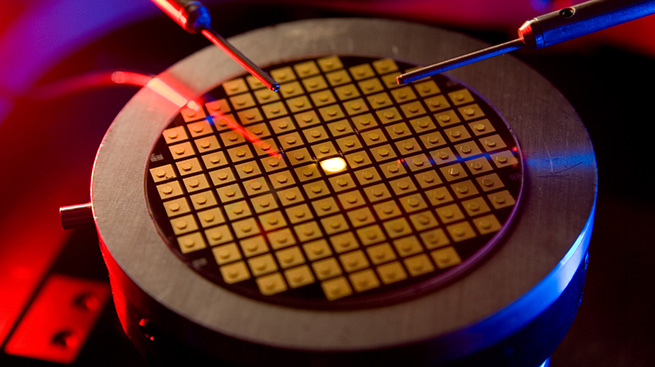
Applied Electromagnetics & RF Circuits
Applied electromagnetics plays an essential role in areas such as wireless technologies, the environment, life sciences, transportation, and more.
Learn more >
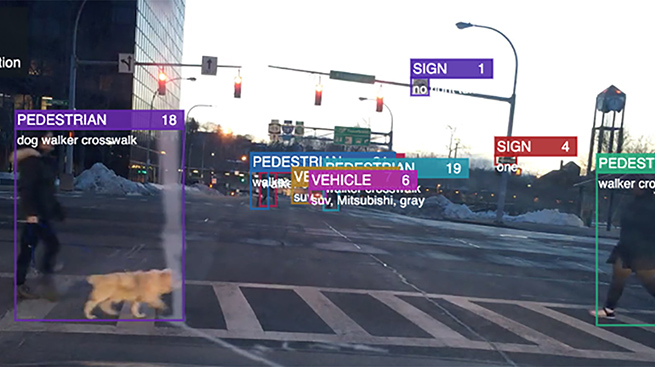
Computer Vision
Our faculty are exploring a number of critical problems in the area of computer vision, with a focus on the analysis and modeling of visual scenes from static images as well as video sequences.
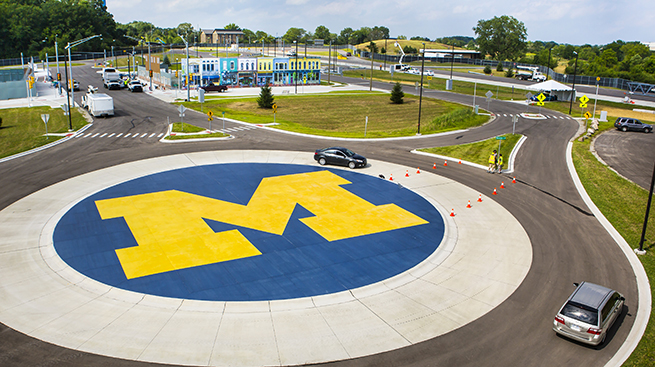
Control Systems
Applications for control include such areas as cyber-physical systems, biological systems, networks, production lines, and biped locomotion.
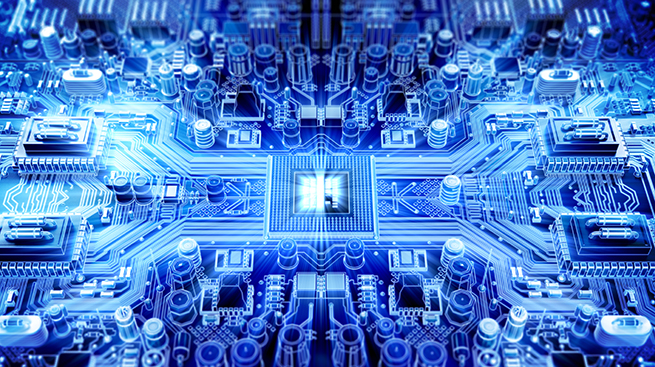
Embedded Systems
The market is booming for embedded systems such as computers in vehicles, wireless sensors, medical devices, wearable fitness devices, and smartphones.

ECE Education Research
Scholars focus on and apply research methods from education, learning sciences, and social-behavioral sciences to advance the success of engineering.
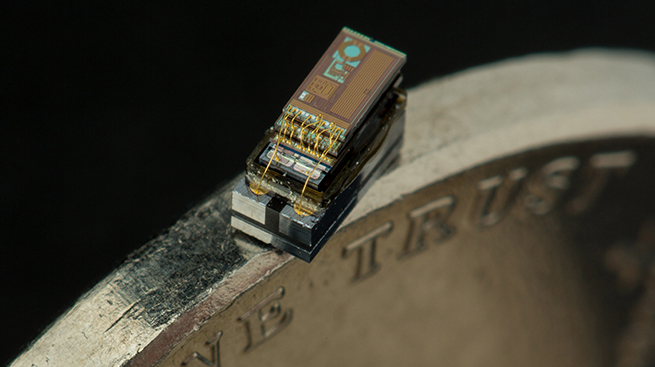
Integrated Circuits & VLSI
Specialties include analog circuits, data converters, digital circuits, energy harvesting, hardware DSP implementation, low power circuits, RF circuits, and sensing systems.
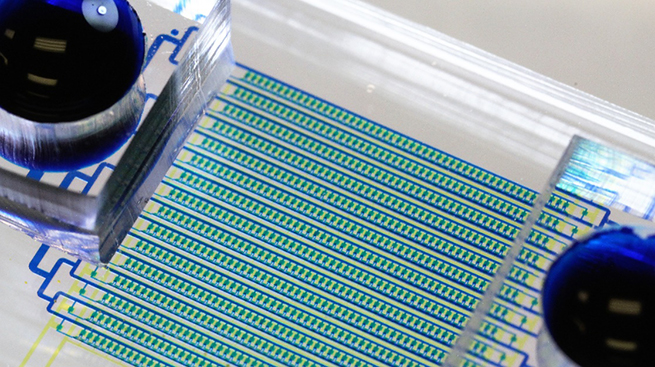
MEMS & Microsystems
This research area encompasses projects on a variety of micromachined sensors and actuators and on integrated microsystems that combine these components.

Network, Communication, and Information Systems
Communications research at U-M is investigating the fundamental limits of performance possible in communication systems and communication networks and the practical methods of achieving close to the fundamental limits.
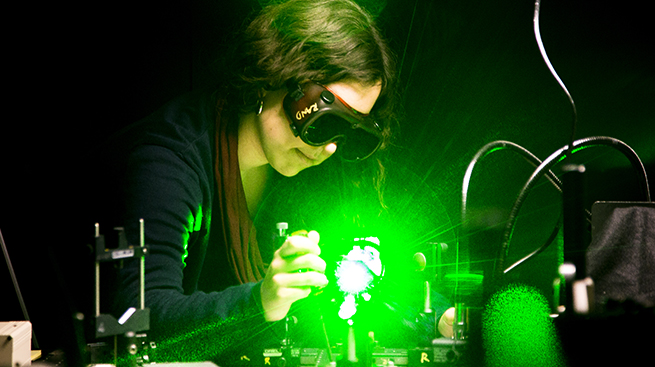
Optics & Photonics
The Optics and Photonics laboratories conduct research in the general areas of photonics, quantum optoelectronics, and ultrafast optical science.
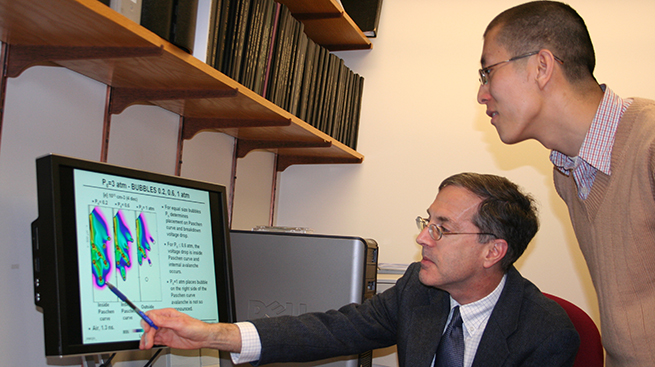
Plasma Science and Engineering
Investigating fundamental transport and reaction chemistry of partially ionized gases and their application to technologies ranging from lighting sources, lasers, and sensors to materials processing, biotechnology, microelectronics fabrication, and space sciences.

Power & Energy
Energy is one of the most crucial aspects to our world today. From climate change to environmental justice to security and health, power and energy plays a major role in shaping the future.
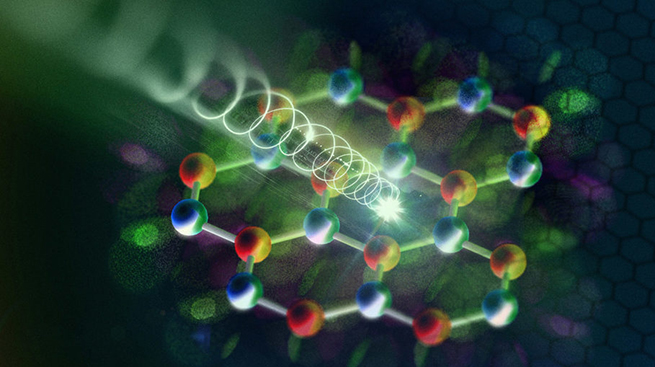
Quantum Science & Technology
Quantum science and devices is a research area that is developing new concepts and hardware for information processing and communications using theoretical computer science, atomic physics and optics.

Robotics & Autonomous Systems
We work to improve the information gathering, computing, and decision making platforms to mobilize fully autonomous robots and systems.

Signal & Image Processing and Machine Learning
Our research is developing new models, methods, and technologies that will continue to impact diagnostic and therapeutic medicine, radar imaging, sensor networking, image compression, communications, and other areas.
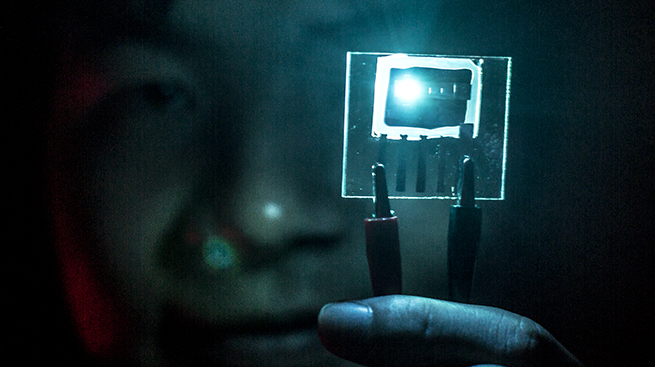
Solid-State Devices & Nanotechnology
Research projects in the Solid-State area cover a wide variety of topics from integrated photonics and optoelectronics to semiconductor materials to high-frequency devices and integrated circuits to nanoscience and the development of nanotechnogies.
- +91-9176966446
- [email protected]

Recent PhD Research Topic Ideas for Electronic Engineering 2020
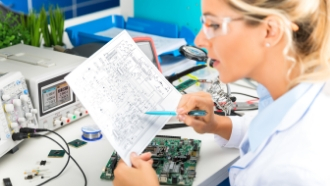
- By Engineering and Technology
- Engineering and Technology , Recent Trends
Sharing is caring!
Recent PhD Research Topic Ideas For Electronic Engineering 2020
Exclusive for scholars pursuing their PhD in Electronics and Communication Engineering with base papers (peer-reviewed articles)
- Energy Efficiency Examination of Comb Source Carrier-Injection Ring depend on Photonic Silicon Connection
- Silicon Photonics is on Wavelength division multiplexing Compatible Polarisation-Diverse OAM Generator and Multiplexer
- Integrating Ultra-Wideband Antennas with the Bluetooth
- Wetness Detection – Bluetooth depends on microcontroller unit and (Global System for Mobile communication
- Electrical Annealing – examination of the performance of Organic Rectifying Diodes
- Depend on organic light-emitting diodes – Optical camera communication system for IoT
- Enhancement in wireless body application for the deployment of a Human Body Phantom Model.
- Manipulation of wireless body area network in Clothing Spoof Surface Plasmons
- Deliberation of Human Body Blocking in User-Dense Condition and analyzation of Channel Capacity of Millimetre-Wave WBAN
- Tackling the catastrophic forgetting interface using an artificial neural network
- Wavelength Demultiplexer Models Running on Several Spatial Modes of the Rectangular Waveguide
- Enhancement in Decision Making with Photonics for Bandit Issues
- Binary Coherent Optical Receiver depend on Opto-Electronic Neural Network
- Backside Metal Mirrors with a grating coupler in silicon insulator
- Autonomous network diagnosis with Artificial intelligence (AI)
- Detection and visualization of terahertz using ballistic graphene rectifiers
- Challenges for 5 G Mobile Backhaul network based on threats and attacks
- Examination of CoAP with the DTLS Protocol in the communications of Fog-to-Fog.
- Distance-Based system for Named Software-Defined Vehicular Networks (NSDVN) in Broadcast Storm Mitigation
- Security and threats challenges in Mobile Ad Hoc Networks MANETs

Related Topics Engineering and Technology

- Adversarial Attacks
- IT & Computer Science
- Research papers
A Critical Review On Adversarial Attacks On Intrusion Detection Systems

- Engineering & Technology
- Future Topics/ Titles
Recent Challenges in Artificial Intelligence – Adversarial Attacks
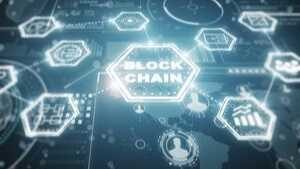
Blockchain Technology And Its Potential Applications: Future Research Potential
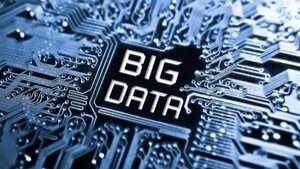
- Trending Algorithms & coding
Most Important Big Data Analytical Tools For Researchers

- Trending Data collection Methods
Building An Effective Machine Learning Algorithms For Intrusion Detection Systems (IDS): How To Best Select The Dataset And Sizes For Building IDS Models

Understanding Of An Evolutionary Algorithms In Artificial Intelligence (AI) 2019
Related services, how to do your phd thesis using secondary data collection in 4 steps, how to solve some of the difficulties in thesis proposal writing through interaction with their peers in the writing course.

A critical review on Adversarial Attacks on Intrusion Detection Systems

CSR And Business Ethics: Are They One And The Same? 2019-2020

Data Analysis

Publication Support

Data Collection

Dissertation

Coding & Algorithm
- Recent Posts
- Guidelines to Write a Research Proposal for Neurology Research Scholars - March 19, 2021
- How to Choose a PhD Dissertation Topic For Economic Research? List out the Criteria for Topic Selection - March 11, 2021
- Beginners Guide to Write a Research Proposal for a PhD in Computer Science - February 19, 2021
Leave a Reply Cancel reply
Your email address will not be published. Required fields are marked *
Related Posts
Soluble CD27 (sCD27) is associated with somatic immune reaction status. Moreover, sCD27 level is associated with the prognosis of patients with prostate cancer who receive immunotherapy. In this study, we assessed sCD27 levels in patients with advanced lung cancer and determined their correlation with survival and clinicopathologic parameters. Serum samples were collected from patients with advanced lung cancer, and sCD27 was quantified via enzyme-linked immunosorbent assay. The association between sCD27 levels and clinicopathologic status and patient survival was retrospectively analyzed. Of 96 patients analyzed, 73 had adenocarcinoma, 7 had squamous cell carcinoma, and 15 had small cell carcinoma. Median serum sCD27 level was 36.54 U/mL (range, undetectable-104.47); this is lower than that previously reported for patients with lung cancer, including those with localized stages. Patients with squamous cell carcinoma had higher sCD27 levels (p = 0.010). Age, performance status, and serum albumin levels were significantly correlated with serum sCD27 level. Patients with high serum sCD27 levels (\u226532.52 U/mL; n = 58) had poorer prognosis than those with low serum sCD27 levels (<32.52 U/mL, n = 38; median survival, 7.3 vs. 21.8 months, respectively, p< 0.0001). High sCD27 level is associated with poor prognosis and may reflect the immune-exhausted status of patients with advanced lung cancer.
PhD Assistance
Exclusive for scholars pursuing their phd in electronics and communication engineering with base papers (peer-reviewed articles), referred blog.
- algorithm & coding
- computer scienceengineering & technology
- medical image processing
- optimization techniques
- peer-reviewed topics
- PhD Dissertation assistance.
- PhD Dissertation expert
- PhD Dissertation guidance
- PhD Dissertation help
- PhD Dissertation service
- PhD Dissertation support
- PhDassistanceTopic selection
- Tags of Machine Learning
Quick Contact

- Adversial Attacks
- Artificial Intelligence
- Artificial Intelligence (AI) and ML ( Machine Learning )
- Big Data Analysis
- Business and Management
- Categories of Research methodology – PhDAssistance
- Category of Research Proposal Services
- coding & algorithm
- Computer Data Science
- Category of Machine Learning – PhDassistance
- Computer Science/Research writing/Manuscript
- Course Work Service
- Data Analytics
- Data Processing
- Deep Networks
- Dissertation Statistics
- economics dissertation
- Editing Services
- Electrical Engineering Category
- Engineering & Technology
- finance dissertation writing
- Gap Identification
- Healthcare Dissertation Writing
- Intrusion-detection-system
- journals publishing
- Life Science Dissertation writing services
- literature review service
- Machine Learning
- medical thesis writing
- Peer review
- PhD Computer Programming
- PhD Dissertation
- Phd Journal Manuscript
- Annotated Bibliography
- PhD Publication Support
- Phd thesis writing services
- Phd Topic Selection
- Categories of PhdAssistance Dissertation
- Power Safety
- problem identification
- Quantitative Analysis
- quantitative research
- Recent Trends
- Referencing and Formatting
- Research Gap
- research journals
- Research Methodology
- research paper
- Research Proposal Service
- secondary Data collection
- Statistical Consulting Services
- Uncategorized
PhD Assistance | Blog
- Prospective students
- International students
- PhD candidates
- Professors and researchers
- Institutions and companies
- Academic Board
- Career opportunities
Research topics
- Advisory Board
- Regulations
The PhD Program in Electrical, Electronics and Communications Engineering involves a large number of faculty members and PhD students from various departments of Politecnico di Torino . This scientific community is active in a multi- and inter--disciplinary set of research activities, so that the specific topics that are available to prospective PhD candidates are very rich.
This page provides the entry point to browse the available Research Topics . For convenience, these can be browsed by discipline or by application field, using the menu on the right. Disciplines and Applications are listed below to provide a synoptic view. Given that ICT and Power/Energy are fundamental ingredients for basically all high-tech research, products and services, you will notice a quite extensive list of Applications .
Disciplines
- Electronic systems and devices
- Controls, Automation and Robotics
- Electromagnetics
- Power and energy conversion
- Power systems
- Communications and Networking
- Machine learning, AI and signal processing
- Models and methods for Computer Aided Design
Applications
- Agritech and Agrifood
- Smart Grids and Green Energy Systems
- Mechatronics
- Quantum Computing, Sensing and Communications
- Smart Cities
- Internet of Things
- Geopositioning and Navigation
- Optical and Wireless Technologies
- Sensors, Radars and Detectors
- Technologies for ICT
- Complex Networks and Systems
PhD Research Topics in Electronics Communication
Presently, Electronics Communication gains the first rank in wired and wireless interface.
PhD research topics in Electronics Communication give you a wide range of brainy notions. Essentially, we will help both the PhD and MS pupils to start with their career.
Generally, it is unique from other recent fields. Additionally, it will start the digital data sharing between M2M and HCA. Of course, the streaming of data will takes place through electromagnetic waves. First and foremost, it will employ NFC as well as FFC methods.
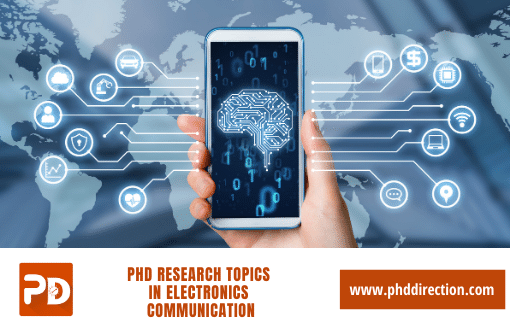
Popular Areas of Communication
- Dielectric Resonator Antenna
- Optically Steerable Antenna Array
- MIMO-SAR Millimeter-Wave
- UHF RFID Signal Broadcast
- And also Low-UWB Communication
- Massive MIMO System
- Nonlinear Baseband Radars
- RTS-Based Measurement
- Planar SIMO/MU-MIMO
- 3D and also in inkjet printing Antenna
Our experts will entirely focus on current key issues to raise the worth of your PhD. That is to say; they work on each nook of the recent areas to find new facts. Thus, it will create the best imprint and uplift your career from others.
Strategic Elements in Electronics Communication
- Antenna Design and Propagation
- Channel Measurement
- Interference Reduction
- Energy Harvesting
- Power Transfer
- Collaboration Of Smart System
- And also in Chipless Hybrid RFIDs
PhD research topics in Electronics Communication offer stage by stage aid in your study actions. At the end of each phase, we will make sure that the value of work is good. We will indeed work together with you in your work.
Once you join us, we work hard and smart to grow your success…Last, of all, we will attain our aim in a short time…
We have sequenced few more research thoughts from our PhD research topics in Electronics,
On the use of accuracy of periodic discrete finite-length signal reconstruction through Whittaker-Kotelnikov-Shannon interpolation formula method
An effectual function of Analysis in Transient Signal Due to Person Movement in Gate System By Intra-Body Communication
A competent process of Improvement of the ATS system for safety on the three-aspect railway signaling system in conventional line
An inventive function of Neural Network embedded system intended for real-time identification of EMG signals
An effective Performance Analysis of Multiuser Dual-Hop Amplify-and-Forward Relay System With FSO/RF Links
An inventive mechanism forProbabilistically shaped signaling and machine learning detection for optical interconnection
On effectual function of one principle of monitoring the network of optical transmission systems
The new-fangled mechanism for Fiber Optical Parametric Oscillator and Amplifier for CARS Spectroscopy
An innovative process of Burst-mode digital signal processing that pre-calculates FIR filter coefficients for digital coherent pon upstream
An effectual analysis of methods increasing the quality for operation optical signal transfer systems in telecommunication systems
The new process of Dyadic Probabilistic Shaping of PAM-4 and PAM-8 for Cost-Effective VCSEL-MMF Optical Interconnection
An inventive source for Training-Aided Joint Frame and Frequency Synchronization for THP FTN Coherent Optical Systems
On the use of Photonic Integrated Turbo-Switch based on All-Optical Wavelength Conversion of PAM-4 Signal
A new design process of Novel OSNR Measurement Techniques Based on Optical Spectrum Analysis and Their Application to Coherent-Detection Systems
An effective mechanism for Proposal in Optical Wireless Turbo Coded System with Hybrid PPM-OOK Signalling system
An innovative function of 5G flexible optical transport networks with large-capacity, low-latency and high-efficiency system
An effective Research and analysis study of Nonlinear Effects in Optical Systems used By Spectral Technologies
An innovative function of Investigation of DC-Biased Optical OFDM With Precoding Matrix for Visible Light Communications: Theory, Simulations, and Experiments
An innovative mechanism for Acquisition and storage of optical interference fringes by means of an embedded system
A new-fangled mechanism for Flexible Two-Way PM-Based Fiber-FSO Convergence System

Why Work With Us ?
Senior research member, research experience, journal member, book publisher, research ethics, business ethics, valid references, explanations, paper publication, 9 big reasons to select us.
Our Editor-in-Chief has Website Ownership who control and deliver all aspects of PhD Direction to scholars and students and also keep the look to fully manage all our clients.
Our world-class certified experts have 18+years of experience in Research & Development programs (Industrial Research) who absolutely immersed as many scholars as possible in developing strong PhD research projects.
We associated with 200+reputed SCI and SCOPUS indexed journals (SJR ranking) for getting research work to be published in standard journals (Your first-choice journal).
PhDdirection.com is world’s largest book publishing platform that predominantly work subject-wise categories for scholars/students to assist their books writing and takes out into the University Library.
Our researchers provide required research ethics such as Confidentiality & Privacy, Novelty (valuable research), Plagiarism-Free, and Timely Delivery. Our customers have freedom to examine their current specific research activities.
Our organization take into consideration of customer satisfaction, online, offline support and professional works deliver since these are the actual inspiring business factors.
Solid works delivering by young qualified global research team. "References" is the key to evaluating works easier because we carefully assess scholars findings.
Detailed Videos, Readme files, Screenshots are provided for all research projects. We provide Teamviewer support and other online channels for project explanation.
Worthy journal publication is our main thing like IEEE, ACM, Springer, IET, Elsevier, etc. We substantially reduces scholars burden in publication side. We carry scholars from initial submission to final acceptance.
Related Pages
Phd Research Topics In Remote Sensing
Phd Thesis Topics Research Guide
Phd Research Topics In Renewable Energy
Phd Thesis Research Paper Sale
Phd Research Topics In Router
Phd Research Topics In Ece
Phd Research Topics In Routing
Phd Thesis Topics Research Help
Phd Research Topics In M2m
Phd Thesis Research Paper Assistance
Phd Research Topics In Geoscience
Phd Thesis Research Paper Writing Service
Phd Research Topics In Electronics And Communication
Phd Research Topics In Machine To Machine Communication
Phd Research Topics In Geoscience Remote Sensing
Our Benefits
Throughout reference, confidential agreement, research no way resale, plagiarism-free, publication guarantee, customize support, fair revisions, business professionalism, domains & tools, we generally use, wireless communication (4g lte, and 5g), ad hoc networks (vanet, manet, etc.), wireless sensor networks, software defined networks, network security, internet of things (mqtt, coap), internet of vehicles, cloud computing, fog computing, edge computing, mobile computing, mobile cloud computing, ubiquitous computing, digital image processing, medical image processing, pattern analysis and machine intelligence, geoscience and remote sensing, big data analytics, data mining, power electronics, web of things, digital forensics, natural language processing, automation systems, artificial intelligence, mininet 2.1.0, matlab (r2018b/r2019a), matlab and simulink, apache hadoop, apache spark mlib, apache mahout, apache flink, apache storm, apache cassandra, pig and hive, rapid miner, support 24/7, call us @ any time, +91 9444829042, [email protected].
Questions ?
Click here to chat with us
IIIT Hyderabad has announced suspension of the course work with immediate effect on 14th-March-2020 and has made it mandatory for all undergraduate students (first year to fourth year batches) and postgraduate students (MTech first and second year batches) doing only course work to return home by 18th-March-2020; research students (MS, PhD and Dual Degree students registered for thesis credits) can choose to stay and continue their research work. Institute will announce plans for finishing the Spring semester's coursework by 20th-March-2020.
PhD in Electronics and Communication Engineering
About the program.
The PhD programme in Electronics and Communication Engineering (ECE) is a research-based programme. The research can be in any of the broad areas in ECE. The core strength of the institute is currently in the following core areas: signal/speech /image processing, VLSI and embedded systems, robotics, and communications. The mian emphasis of this programme is on a thesis. Work towards the thesis requires a good understanding the state of art in an area, problem formulation, original contributions based on analysis with sufficient mathematical rigour and validation. The research is expected to be of sufficient quality to be publishable in leading international journals and top conferences pertaining to an area of research.
This programme has a limited amount of course work that can be completed in one year. The course work is aimed at providing a student with sufficient breadth and to carry out research. The main emphasis is on the research work leading to a thesis. Typically students decide on their research area and faculty advisor within the first year while doing course work. Thereafter, the steps involved are: finishing course work (to build research background and breadth), clearing a set of qualifiers, proposal defense, and thesis defense. The PhD qualifiers are a combination of coursework and comprehensive exams.
Course Duration
Flexible (6 semesters minimum; 12 semesters maximum). Typical duration varies between 4-6 years.
Eligibility
B.E/B.Tech/M.E/M Tech all branches, M.Sc, MCA, MA (Maths).
Breadth Courses:
Any Three courses from the following:
EC5.407 - Wireless Communication
CS7.403 - SMAI
EC2.408 - Digital VLSI Design
EC2.401 - Analog IC Design
EC2.409 - Principles of Semiconductor Devices
EC4.401 - Robotics: Dynamics and Control
EC5.410 - Information Theory
ECE439 - Error-Correcting Codes
CS7.505 - Computer Vision
EC5.402 - Time Frequency Analysis
EC5.406 - Signal Detection and Estimation Theory
In addition to three breadth courses from the above list, additional foundation courses can be recommended by the advisor.
Depth Courses:
Three courses should be from level 400 and above. One project/Independent Study is allowed in place of a depth course. These courses should be advised/approved by the thesis advisor.
Click here for Detailed Curriculum Document
Regulations
https://www.iiit.ac.in/academics/programmes/phdreg
Admission Procedure
Visit http://pgadmissions.iiit.ac.in/
https://www.iiit.ac.in/people/faculty
Research Centers
1. Center for VLSI and Embedded Systems ( http://cvest.iiit.ac.in/ )
2. Signal Processing and Communications Research Center ( https://spcrc.iiit.ac.in/ )
3. Robotics Research Center ( https://robotics.iiit.ac.in/ )
4. Center for Visual Information Technology ( http://cvit.iiit.ac.in/ )
For the overall list of Research Centers in IIIT Please Visit:
https://www.iiit.ac.in/research/centers
Page last updated on May, 2023
Electronics Research Paper Topics

This list of electronics research paper topics provides the list of 30 potential topics for research papers and an overview article on the history of electronics.
1. Applications of Superconductivity
The 1986 Applied Superconductivity Conference proclaimed, ‘‘Applied superconductivity has come of age.’’ The claim reflected only 25 years of development, but was justifiable due to significant worldwide interest and investment. For example, the 1976 annual budget for superconducting systems exceeded $30 million in the U.S., with similar efforts in Europe and Japan. By 1986 the technology had matured impressively into applications for the energy industry, the military, transportation, high-energy physics, electronics, and medicine. The announcement of high-temperature superconductivity just two months later brought about a new round of dramatic developments.
Academic Writing, Editing, Proofreading, And Problem Solving Services
Get 10% off with 24start discount code, 2. discovery of superconductivity.
As the twenty-first century began, an array of superconducting applications in high-speed electronics, medical imaging, levitated transportation, and electric power systems are either having, or will soon have, an impact on the daily life of millions. Surprisingly, at the beginning of the twentieth century, the discovery of superconductivity was completely unanticipated and unimagined.
In 1911, three years after liquefying helium, H. Kammerlingh Onnes of the University of Leiden discovered superconductivity while investigating the temperature-dependent resistance of metals below 4.2Kelvin. Later reporting on experiments conducted in 1911, he described the disappearance of the resistance of mercury, stating, ‘‘Within some hundredths of a degree came a sudden fall, not foreseen [by existing theories of resistance]. Mercury has passed into a new state, which . . . may be called the superconductive state.’’
3. Electric Motors
The main types of electric motors that drove twentieth century technology were developed toward the end of the nineteenth century, with direct current (DC) motors being introduced before alternating current (AC) ones. Most important initially was the ‘‘series’’ DC motor, used in electric trolleys and trains from the 1880s onward. The series motor exerts maximum torque on starting and then accelerates to its full running speed, the ideal characteristic for traction work. Where speed control independent of the load is required in such applications as crane and lift drives, the ‘‘shunt’’ DC motor is more suitable.
4. Electronic Calculators
The electronic calculator is usually inexpensive and pocket-sized, using solar cells for its power and having a gray liquid crystal display (LCD) to show the numbers. Depending on the sophistication, the calculator might simply perform the basic mathematical functions (addition, subtraction, multiplication, division) or might include scientific functions (square, log, trig). For a slightly higher cost, the calculator will probably include programmable scientific and business functions. At the end of the twentieth century, the electronic calculator was as commonplace as a screwdriver and helped people deal with all types of mathematics on an everyday basis. Its birth and growth were early steps on the road to today’s world of computing.
5. Electronic Communications
The broad use of digital electronic message communications in most societies by the end of the 20th century can be attributed to a myriad of reasons. Diffusion was incremental and evolutionary. Digital communication technology was seeded by large-scale funding for military projects that broke technological ground, however social needs and use drove systems in unexpected ways and made it popular because these needs were embraced. Key technological developments happened long before diffusion into society, and it was only after popularity of the personal computer that global and widespread use became commonplace. The Internet was an important medium in this regard, however the popular uses of it were well established long before its success. Collaborative developments with open, mutually agreed standards were key factors in broader diffusion of the low-level transmission of digital data, and provided resistance to technological lock-in by any commercial player. By the twenty-first century, the concept of interpersonal electronic messaging was accepted as normal and taken for granted by millions around the world, where infrastructural and political freedoms permitted. As a result, traditional lines of information control and mass broadcasting were challenged, although it remains to be seen what, if any, long-term impact this will have on society.
6. Electronic Control Technology
The advancement of electrical engineering in the twentieth century made a fundamental change in control technology. New electronic devices including vacuum tubes (valves) and transistors were used to replace electromechanical elements in conventional controllers and to develop new types of controllers. In these practices, engineers discovered basic principles of control theory that could be further applied to design electronic control systems.
7. Fax Machine
Fax technology was especially useful for international commercial communication, which was traditionally the realm of the Telex machine, which only relayed Western alpha-numeric content. A fax machine could transmit a page of information regardless of what information it contained, and this led to rapid and widespread adoption in developing Asian countries during the 1980s. With the proliferation of the Internet and electronic e-mail in the last decade of the twentieth century, fax technology became less used for correspondence. At the close of the 20th century, the fax machine was still widely used internationally for the transmission of documents of all forms, with the ‘‘hard copy’’ aspect giving many a sense of permanence that other electronic communication lacked.
8. Hall Effect Devices
The ‘‘Hall effect,’’ discovered in 1879 by American physicist Edwin H. Hall, is the electrical potential produced when a magnetic field is perpendicular to a conductor or semiconductor that is carrying current. This potential is a product of the buildup of charges in that conductor. The magnetic field makes a transverse force on the charge carriers, resulting in the charge being moved to one of the sides of the conductor. Between the sides of the conductor, measurable voltage is yielded from the interaction and balancing of the polarized charge and the magnetic influence.
Hall effect devices are commonly used as magnetic field sensors, or alternatively if a known magnetic field is applied, the sensor can be used to measure the current in a conductor, without actually plugging into it (‘‘contactless potentiometers’’). Hall sensors can also be used as magnetically controlled switches, and as a contactless method of detecting rotation and position, sensing ferrous objects.
9. Infrared Detectors
Infrared detectors rely on the change of a physical characteristic to sense illumination by infrared radiation (i.e., radiation having a wavelength longer than that of visible light). The origins of such detectors lie in the nineteenth century, although their development, variety and applications exploded during the twentieth century. William Herschel (c. 1800) employed a thermometer to detect this ‘‘radiant heat’’; Macedonio Melloni, (c. 1850) invented the ‘‘thermochrose’’ to display spatial differences of irradiation as color patterns on a temperature-sensitive surface; and in 1882 William Abney found that photographic film could be sensitized to respond to wavelengths beyond the red end of the spectrum. Most infrared detectors, however, convert infrared radiation into an electrical signal via a variety of physical effects. Here, too, 19th century innovations continued in use well into the 21st century.
10. Integrated Circuits Design and Use
Integrated circuits (ICs) are electronic devices designed to integrate a large number of microscopic electronic components, normally connected by wires in circuits, within the same substrate material. According to the American engineer Jack S. Kilby, they are the realization of the so-called ‘‘monolithic idea’’: building an entire circuit out of silicon or germanium. ICs are made out of these materials because of their properties as semiconductors— materials that have a degree of electrical conductivity between that of a conductor such as metal and that of an insulator (having almost no conductivity at low temperatures). A piece of silicon containing one circuit is called a die or chip. Thus, ICs are known also as microchips. Advances in semiconductor technology in the 1960s (the miniaturization revolution) meant that the number of transistors on a single chip doubled every two years, and led to lowered microprocessor costs and the introduction of consumer products such as handheld calculators.

11. Integrated Circuits Fabrication
The fabrication of integrated circuits (ICs) is a complicated process that consists primarily of the transfer of a circuit design onto a piece of silicon (the silicon wafer). Using a photolithographic technique, the areas of the silicon wafer to be imprinted with electric circuitry are covered with glass plates (photomasks), irradiated with ultraviolet light, and treated with chemicals in order to shape a circuit’s pattern. On the whole, IC manufacture consists of four main stages:
- Preparation of a design
- Preparation of photomasks and silicon wafers
- Testing and packaging
Preparing an IC design consists of drafting the circuit’s electronic functions within the silicon board. This process has radically changed over the years due to the increasing complexity of design and the number of electronic components contained within the same IC. For example, in 1971, the Intel 4004 microprocessor was designed by just three engineers, while in the 1990s the Intel Pentium was designed by a team of 100 engineers. Moreover, the early designs were produced with traditional drafting techniques, while from the late 1970s onward the introduction of computer-aided design (CAD) techniques completely changed the design stage. Computers are used to check the design and simulate the operations of perspective ICs in order to optimize their performance. Thus, the IC drafted design can be modified up to 400 times before going into production.
12. Josephson Junction Devices
One of the most important implications of quantum physics is the existence of so-called tunneling phenomena in which elementary particles are able to cross an energy barrier on subatomic scales that it would not be possible for them to traverse were they subject to the laws of classical mechanics. In 1973 the Nobel Prize in Physics was awarded to Brian Josephson, Ivan Giaever and Leo Esaki for their work in this field. Josephson’s contribution consisted of a number of important theoretical predictions made while a doctoral student at Cambridge University. His work was confirmed experimentally within a year of its publication in 1961, and practical applications were commercialized within ten years.
13. Laser Applications
Lasers are employed in virtually every sector of the modern world including industry, commerce, transportation, medicine, education, science, and in many consumer devices such as CD players and laser printers. The intensity of lasers makes them ideal cutting tools since their highly focused beam cuts more accurately than machined instruments and leaves surrounding materials unaffected. Surgeons, for example, have employed carbon dioxide or argon lasers in soft tissue surgery since the early 1970s. These lasers produce infrared wavelengths of energy that are absorbed by water. Water in tissues is rapidly heated and vaporized, resulting in disintegration of the tissue. Visible wavelengths (argon ion laser) coagulate tissue. Far-ultraviolet wavelengths (higher photon energy, as produced by excimer lasers) break down molecular bonds in target tissue and ‘‘ablate’’ tissue without heating. Excimer lasers have been used in corneal surgery since 1984. Short pulses only affect the surface area of interest and not deeper tissues. The extremely small size of the beam, coupled with optical fibers, enables today’s surgeons to conduct surgery deep inside the human body often without a single cut on the exterior. Blue lasers, developed in 1994 by Shuji Nakamura of Nichia Chemical Industries of Japan, promise even more precision than the dominant red lasers currently used and will further revolutionize surgical cutting techniques.
14. Laser Theory and Operation
Lasers (an acronym for light amplification by stimulated emission of radiation) provide intense, focused beams of light whose unique properties enable them to be employed in a wide range of applications in the modern world. The key idea underlying lasers originated with Albert Einstein who published a paper in 1916 on Planck’s distribution law, within which he described what happens when additional energy is introduced into an atom. Atoms have a heavy and positively charged nucleus surrounded by groups of extremely light and negatively charged electrons. Electrons orbit the atom in a series of ‘‘fixed’’ levels based upon the degree of electromagnetic attraction between each single electron and the nucleus. Various orbital levels also represent different energy levels. Normally electrons remain as close to the nucleus as their energy level permits, with the consequence that an atom’s overall energy level is minimized. Einstein realized that when energy is introduced to an atom; for example, through an atomic collision or through electrical stimulation, one or more electrons become excited and move to a higher energy level. This condition exists temporarily before the electron returns to its former energy level. When this decay phenomenon occurs, a photon of light is emitted. Einstein understood that since the energy transitions within the atom are always identical, the energy and the wavelength of the stimulated photon of light are also predictable; that is, a specific type of transition within an atom will yield a photon of light of a specific wavelength. Hendrick Kramers and Werner Heisenberg obtained a series of more extensive calculations of the effects of these stimulated emissions over the next decade. The first empirical evidence supporting these theoretical calculations occurred between 1926 and 1930 in a series of experiments involving electrical discharges in neon.
15. Lasers in Optoelectronics
Optoelectronics, the field combining optics and electronics, is dependent on semiconductor (diode) lasers for its existence. Mass use of semiconductor lasers has emerged with the advent of CD and DVD technologies, but it is the telecommunications sector that has primarily driven the development of lasers for optoelectronic systems. Lasers are used to transmit voice, data, or video signals down fiber-optic cables.
While the success of lasers within telecommunication systems seems unquestioned thanks to their utility in long-distance large-capacity, point-to-point links, these lasers also find use in many other applications and are ubiquitous in the developed world. Their small physical size, low power operation, ease of modulation (via simple input current variation) and small beam size mean that these lasers are now part of our everyday world, from CDs and DVDs, to supermarket checkouts and cosmetic medicine.
16. Light Emitting Diodes
Light emitting diodes, or LEDs, are semiconductor devices that emit monochromatic light once an electric current passes through it. The color of light emitted from LEDs depends not on the color of the bulb, but on the emission’s wavelength. Typically made of inorganic materials like gallium or silicon, LEDs have found frequent use as ‘‘pilot,’’ or indicator, lights for electronic devices. Unlike incandescent light bulbs, which generate light from ‘‘heat glow,’’ LEDs create light more efficiently and are generally more durable than traditional light sources.
17. Lighting Techniques
In 1900 electric lighting in the home was a rarity. Carbon filament incandescent lamps had been around for 20 years, but few households had electricity. Arc lamps were used in streets and large buildings such as railway stations. Domestic lighting was by candle, oil and gas.
The stages of the lightning techniques evolution are the following:
- Non-Electric Lighting
- Electric Lighting: Filament Lamps
- Electric Lighting: Discharge Lamps
- Electric Lighting: Fluorescent Lamps
- Electric Lighting: LED Lamps
18. Mechanical and Electromechanical Calculators
The widespread use of calculating devices in the twentieth century is intimately linked to the rise of large corporations and to the increasing role of mathematical calculation in science and engineering. In the business setting, calculators were used to efficiently process financial information. In science and engineering, calculators speeded up routine calculations. The manufacture and sale of calculators was a widespread industry, with major firms in most industrialized nations. However, the manufacture of mechanical calculators declined very rapidly in the 1970s with the introduction of electronic calculators, and firms either diversified into other product lines or went out of business. By the end of the twentieth century, slide rules, adding machines, and other mechanical calculators were no longer being manufactured.
19. Mobile (Cell) Telephones
In the last two decades of the twentieth century, mobile or cell phones developed from a minority communication tool, characterized by its prevalence in the 1980s among young professionals, to a pervasive cultural object. In many developed countries, more than three quarters of the population owned a cell phone by the end of the 20th century.
Cell phone technology is a highly evolved form of the personal radio systems used by truck drivers (citizens band, or CB, radio) and police forces in which receiver/transmitter units communicate with one another or a base antenna. Such systems work adequately over short distances with a low volume of traffic but cannot be expanded to cope with mass communication due to the limited space (bandwidth) available in the electromagnetic spectrum. Transmitting and receiving on one frequency, they allow for talking or listening but not both simultaneously.
For mobile radio systems to make the step up to effective telephony, a large number of two-way conversations needed to be accommodated, requiring a duplex channel (two separate frequencies, taking up double the bandwidth). In order to establish national mobile phone networks without limiting capacity or the range of travel of handsets, a number of technological improvements had to occur.

20. Photocopiers
The photocopier, copier, or copying machine, as it is variously known, is a staple of modern life. Copies by the billions are produced not only in the office but also on machines available to the public in libraries, copy shops, stationery stores, supermarkets, and a wide variety of other commercial facilities. Modern xerographic copiers, produced by a number of manufacturers, are available as desktop models suitable for the home as well as the small office. Many modern copiers reproduce in color as well as black and white, and office models can rival printing presses in speed of operation.
21. Photosensitive Detectors
Sensing radiation from ultraviolet to optical wavelengths and beyond is an important part of many devices. Whether analyzing the emission of radiation, chemical solutions, detecting lidar signals, fiber-optic communication systems, or imaging of medical ionizing radiation, detectors are the final link in any optoelectronic experiment or process.
Detectors fall into two groups: thermal detectors (where radiation is absorbed and the resulting temperature change is used to generate an electrical output) and photon (quantum) detectors. The operation of photon detectors is based on the photoelectric effect, in which the radiation is absorbed within a metal or semiconductor by direct interaction with electrons, which are excited to a higher energy level. Under the effect of an electric field these carriers move and produce a measurable electric current. The photon detectors show a selective wavelength-dependent response per unit incident radiation power.
22. Public and Private Lighting
At the turn of the 20th century, lighting was in a state of flux. In technical terms, a number of emerging lighting technologies jostled for economic dominance. In social terms, changing standards of illumination began to transform cities, the workplace, and the home. In design terms, the study of illumination as a science, as an engineering profession, and as an applied art was becoming firmly established. In the last decades of the 20th century, the technological and social choices in lighting attained considerable stability both technically and socially. Newer forms of compact fluorescent lighting, despite their greater efficiency, have not significantly replaced incandescent bulbs in homes owing to higher initial cost. Low-pressure sodium lamps, on the other hand, have been adopted increasingly for street and architectural lighting owing to lower replacement and maintenance costs. As with fluorescent lighting in the 1950s, recent lighting technologies have found niche markets rather than displacing incandescents, which have now been the dominant lighting system for well over a century.
23. Quantum Electronic Devices
Quantum theory, developed during the 1920s to explain the behavior of atoms and the absorption and emission of light, is thought to apply to every kind of physical system, from individual elementary particles to macroscopic systems such as lasers. In lasers, stimulated transitions between discrete or quantized energy levels is a quantum electronic phenomena (discussed in the entry Lasers, Theory and Operation). Stimulated transitions are also the central phenomena in atomic clocks. Semiconductor devices such as the transistor also rely on the arrangement of quantum energy levels into a valence band and a conduction band separated by an energy gap, but advanced quantum semiconductor devices were not possible until advances in fabrication techniques such as molecular beam epitaxy (MBE) developed in the 1960s made it possible to grow extremely pure single crystal semiconductor structures one atomic layer at a time.
In most electronic devices and integrated circuits, quantum phenomena such as quantum tunneling and electron diffraction—where electrons behave not as particles but as waves—are of no significance, since the device is much larger than the wavelength of the electron (around 100 nanometers, where one nanometer is 109 meters or about 4 atoms wide). Since the early 1980s however, researchers have been aware that as the overall device size of field effect transistors decreased, small-scale quantum mechanical effects between components, plus the limitations of materials and fabrication techniques, would sooner or later inhibit further reduction in the size of conventional semiconductor transistors. Thus to produce devices on ever-smaller integrated circuits (down to 25 nanometers in length), conventional microelectronic devices would have to be replaced with new device concepts that take advantage of the quantum mechanical effects that dominate on the nanometer scale, rather than function in despite of them. Such solid state ‘‘nanoelectronics’’ offers the potential for increased speed and density of information processing, but mass fabrication on this small scale presented formidable challenges at the end of the 20th century.
24. Quartz Clocks and Watches
The wristwatch and the domestic clock were completely reinvented with all-new electronic components beginning about 1960. In the new electronic timepieces, a tiny sliver of vibrating quartz in an electrical circuit provides the time base and replaces the traditional mechanical oscillator, the swinging pendulum in the clock or the balance wheel in the watch. Instead of an unwinding spring or a falling weight, batteries power these quartz clocks and watches, and integrated circuits substitute for intricate mechanical gear trains.
25. Radio-Frequency Electronics
Radio was originally conceived as a means for interpersonal communications, either person-toperson, or person-to-people, using analog waveforms containing either Morse code or actual sound. The use of radio frequencies (RF) designed to carry digital data in the form of binary code rather than voice and to replace physical wired connections between devices began in the 1970s, but the technology was not commercialized until the 1990s through digital cellular phone networks known as personal communications services (PCS) and an emerging group of wireless data network technologies just reaching commercial viability. The first of these is a so-called wireless personal area network (WPAN) technology known as Bluetooth. There are also two wireless local area networks (WLANs), generally grouped under the name Wi-Fi (wireless fidelity): (1) Wi-Fi, also known by its Institute of Electrical and Electronic Engineers (IEEE) designation 802.11b, and (2) Wi-Fi5 (802.11a).
26. Rectifiers
Rectifiers are electronic devices that are used to control the flow of current. They do this by having conducting and nonconducting states that depend on the polarity of the applied voltage. A major function in electronics is the conversion from alternating current (AC) to direct current (DC) where the output is only one-half (either positive or negative) of the input. Rectifiers that are currently, or have been, in use include: point-contact diodes, plate rectifiers, thermionic diodes, and semiconductor diodes. There are various ways in which rectifiers may be classified in terms of the signals they encounter; this contribution will consider two extremes—high frequency and heavy current—that make significantly different demands on device design.
27. Strobe Flashes
Scarcely a dozen years after photography was announced to the world in 1839, William Henry Fox Talbot produced the first known flash photograph. Talbot, the new art’s co-inventor, fastened a printed paper onto a disk, set it spinning as fast as possible, and then discharged a spark to expose a glass plate negative. The words on the paper could be read on the photograph. Talbot believed that the potential for combining electric sparks and photography was unlimited. In 1852, he pronounced, ‘‘It is in our power to obtain the pictures of all moving objects, no matter in how rapid motion they may be, provided we have the means of sufficiently illuminating them with a sudden electric flash.’’
The electronic stroboscope fulfills Talbot’s prediction. It is a repeating, short-duration light source used primarily for visual observation and photography of high-speed phenomena. The intensity of the light emitted from strobes also makes them useful as signal lights on communication towers, airport runways, emergency vehicles, and more. Though ‘‘stroboscope’’ actually refers to a repeating flash and ‘‘electronic flash’’ denotes a single burst, both types are commonly called ‘‘strobes.’’
28. Transistors
Early experiments in transistor technology were based on the analogy between the semiconductor and the vacuum tube: the ability to both amplify and effectively switch an electrical signal on or off (rectification). By 1940, Russell Ohl at Bell Telephone Laboratories, among others, had found that impure silicon had both positive (ptype material with holes) and negative (n-type) regions. When a junction is created between n-type material and p-type material, electrons on the ntype side are attracted across the junction to fill holes in the other layer. In this way, the n-type semiconductor becomes positively charged and the p-type becomes negatively charged. Holes move in the opposite direction, thus reinforcing the voltage built up at the junction. The key point is that current flows from one side to the other when a positive voltage is applied to the layers (‘‘forward biased’’).
29. Travelling Wave Tubes
One of the most important devices for the amplification of radio-frequency (RF) signals— which range in frequency from 3 kilohertz to 300 gigahertz—is the traveling wave tube (TWT). When matched with its power supply unit, or electronic power conditioner (EPC), the combination is known as a traveling wave tube amplifier (TWTA). The amplification of RF signals is important in many aspects of science and technology, since the ability to increase the strength of a very low-power input signal is fundamental to all types of long-range communications, radar and electronic warfare.
30. Vacuum Tubes/Valves
The vacuum tube has its roots in the late nineteenth century when Thomas A. Edison conducted experiments with electric bulbs in 1883. Edison’s light bulbs consisted of a conducting filament mounted in a glass bulb. Passing electricity through the filament caused it to heat up and radiate light. A vacuum in the tube prevented the filament from burning up. Edison noted that electric current would flow from the bulb filament to a positively charged metal plate inside the tube. This phenomenon, the one-way flow of current, was called the Edison Effect. Edison himself could not explain the filament’s behavior. He felt this effect was interesting but unimportant and patented it as a matter of course. It was only fifteen years later that Joseph John Thomson, a physics professor at the Cavendish Laboratory at the University of Cambridge in the U.K., discovered the electron and understood the significance of what was occurring in the tube. He identified the filament rays as a stream of particles, now called electrons. In a range of papers from 1901 to 1916, O.W. Richardson explained the electron behavior. Today the Edison Effect is known as thermionic emission.
History of Electronics

Few of the basic tasks that electronic technologies perform, such as communication, computation, amplification, or automatic control, are unique to electronics. Most were anticipated by the designers of mechanical or electromechanical technologies in earlier years. What distinguishes electronic communication, computation, and control is often linked to the instantaneous action of the devices, the delicacy of their actions compared to mechanical systems, their high reliability, or their tiny size.
The electronics systems introduced between the late nineteenth century and the end of the twentieth century can be roughly divided into the applications related to communications (including telegraphy, telephony, broadcasting, and remote detection) and the more recently developed fields involving digital information and computation. In recent years these two fields have tended to converge, but it is still useful to consider them separately for a discussion of their history.
The origins of electronics as distinguished from other electrical technologies can be traced to 1880 and the work of Thomas Edison. While investigating the phenomenon of the blackening of the inside surface of electric light bulbs, Edison built an experimental bulb that included a third, unused wire in addition to the two wires supporting the filament. When the lamp was operating, Edison detected a flow of electricity from the filament to the third wire, through the evacuated space in the bulb. He was unable to explain the phenomenon, and although he thought it would be useful in telegraphy, he failed to commercialize it. It went unexplained for about 20 years, until the advent of wireless telegraphic transmission by radio waves. John Ambrose Fleming, an experimenter in radio, not only explained the Edison effect but used it to detect radio waves. Fleming’s ‘‘valve’’ as he called it, acted like a one-way valve for electric waves, and could be used in a circuit to convert radio waves to electric pulses so that that incoming Morse code signals could be heard through a sounder or earphone.
As in the case of the Fleming valve, many early electronic devices were used first in the field of communications, mainly to enhance existing forms of technology. Initially, for example, telephony (1870s) and radio (1890s) were accomplished using ordinary electrical and electromechanical circuits, but eventually both were transformed through the use of electronic devices. Many inventors in the late nineteenth century sought a functional telephone ‘‘relay’’; that is, something to refresh a degraded telephone signal to allow long distance telephony. Several people simultaneously recognized the possibility of developing a relay based on the Fleming valve. The American inventor Lee de Forest was one of the first to announce an electronic amplifier using a modified Fleming valve, which he called the Audion. While he initially saw it as a detector and amplifier of radio waves, its successful commercialization occurred first in the telephone industry. The sound quality and long-distance capability of telephony was enhanced and extended after the introduction of the first electronic amplifier circuits in 1907. In the U.S., where vast geographic distances separated the population, the American Telephone and Telegraph Company (AT&T) introduced improved vacuum tube amplifiers in 1913, which were later used to establish the first coast-to-coast telephone service in 1915 (an overland distance of nearly 5000 kilometers).
These vacuum tubes soon saw many other uses, such as a public-address systems constructed as early as 1920, and radio transmitters and receivers. The convergence of telephony and radio in the form of voice broadcasting was technically possible before the advent of electronics, but its application was greatly enhanced through the use of electronics both in the radio transmitter and in the receiver.
World War I saw the applications of electronics diversify somewhat to include military applications. Mostly, these were modifications of existing telegraph, telephone, and radio systems, but applications such as ground-to-air radio telephony were novel. The pressing need for large numbers of electronic components, especially vacuum tubes suitable for military use, stimulated changes in their design and manufacture and contributed to improving quality and falling prices. After the war, the expanded capacity of the vacuum tube industry contributed to a boom in low-cost consumer radio receivers. Yet because of the withdrawal of the military stimulus and the onset of the Great Depression, the pace of change slowed in the 1930s. One notable exception was in the field of television. Radio broadcasting became such a phenomenal commercial success that engineers and businessmen were envisioning how ‘‘pictures with sound’’ would replace ordinary broadcasting, even in the early 1930s. Germany, Great Britain, and the U.S. all had rudimentary television systems in place by 1939, although World War II would bring nearly a complete halt to these early TV broadcasts.
World War II saw another period of rapid change, this one much more dramatic than that of World War I. Not only were radio communications systems again greatly improved, but for the first time the field of electronics engineering came to encompass much more than communication. While it was the atomic bomb that is most commonly cited as the major technological outcome of World War II, radar should probably be called the weapon that won the war. To describe radar as a weapon is somewhat inaccurate, but there is no doubt that it had profound effects upon the way that naval, aerial, and ground combat was conducted. Using radio waves as a sort of searchlight, radar could act as an artificial eye capable of seeing through clouds or fog, over the horizon, or in the dark. Furthermore, it substituted for existing methods of calculating the distance and speed of targets. Radar’s success hinged on the development of new electronic components, particularly new kinds of vacuum tubes such as the klystron and magnetron, which were oriented toward the generation of microwaves. Subsidized by military agencies on both sides of the Atlantic (as well as Japan) during World War II, radar sets were eventually installed in aircraft and ships, used in ground stations, and even built into artillery shells. The remarkable engineering effort that was launched to make radar systems smaller, more energy efficient, and more reliable would mark the beginning of an international research program in electronics miniaturization that continues today. Radar technology also had many unexpected applications elsewhere, such as the use of microwave beams as a substitute for long-distance telephone cables. Microwave communication is also used extensively today for satellite-to-earth communication.
The second major outcome of electronics research during World War II was the effort to build an electronic computer. Mechanical adders and calculators were widely used in science, business, and government by the early twentieth century, and had reached an advanced state of design. Yet the problems peculiar to wartime, especially the rapid calculation of mountains of ballistics data, drove engineers to look for ways to speed up the machines. At the same time, some sought a calculator that could be reprogrammed as computational needs changed. While computers played a role in the war, it was not until the postwar period that they came into their own. In addition, computer research during World War II contributed little to the development of vacuum tubes, although in later years computer research would drive certain areas of semiconductor electron device research.
While the forces of the free market are not to be discounted, the role of the military in electronics development during World War II was of paramount importance. More-or-less continuous military support for research in electronic devices and systems persisted during the second half of the twentieth century too, and many more new technologies emerged from this effort. The sustained effort to develop more compact, rugged devices such as those demanded by military systems would converge with computer development during the 1950s, especially after the invention of the transistor in late 1947.
The transistor was not a product of the war, and in fact its development started in the 1930s and was delayed by the war effort. A transistor is simply a very small substitute for a vacuum tube, but beyond that it is an almost entirely new sort of device. At the time of its invention, its energy efficiency, reliability, and diminutive size suggested new possibilities for electronic systems. The most famous of these possibilities was related to computers and systems derived from or related to computers, such as robotics or industrial automation. The impetus for the transistor was a desire within the telephone industry to create an energy-efficient, reliable substitute for the vacuum tube. Once introduced, the military pressed hard to accelerate its development, as the need emerged for improved electronic navigational devices for aircraft and missiles.
There were many unanticipated results of the substitution of transistors for vacuum tubes. Because they were so energy efficient, transistors made it much more practical to design battery powered systems. The small transistor radio (known in some countries simply as ‘‘the transistor’’), introduced in the 1950s, is credited with helping to popularize rock and roll music. It is also worth noting that many developing countries could not easily provide broadcasting services until the diffusion of battery operated transistor receivers because of the lack of central station electric power. The use of the transistor also allowed designers to enhance existing automotive radios and tape players, contributing eventually to a greatly expanded culture of in-car listening. There were other important outcomes as well; transistor manufacture provided access to the global electronics market for Asian radio manufacturers, who improved manufacturing methods to undercut their U.S. competitors during the 1950s and 1960s. Further, the transistor’s high reliability nearly eliminated the profession of television and radio repair, which had supported tens of thousands of technicians in the U.S. alone before about 1980.
However, for all its remarkable features, the transistor also had its limitations; while it was an essential part of nearly every cutting-edge technology of the postwar period, it was easily outperformed by the older technology of vacuum tubes in some areas. The high-power microwave transmitting devices in communications satellites and spacecraft, for example, nearly all relied on special vacuum tubes through the end of the twentieth century, because of the physical limitations of semiconductor devices. For the most part, however, the transistor made the vacuum tube obsolete by about 1960.
The attention paid to the transistor in the 1950s and 1960s made the phrase ‘‘solid-state’’ familiar to the general public, and the new device spawned many new companies. However, its overall impact pales in comparison to its successor—the integrated circuit. Integrated circuits emerged in the late 1950s, were immediately adopted by the military for small computer and communications systems, and were then used in civilian computers and related applications from the 1960s. Integrated circuits consist of multiple transistors fabricated simultaneously from layers of semiconductor and other materials. The transistors, interconnecting ‘‘wires,’’ and many of the necessary circuit elements such as capacitors and resistors are fabricated on the ‘‘chip.’’ Such a circuit eliminates much of the laborious process of assembling an electronic system such as a computer by hand, and results in a much smaller product. The ability to miniaturize components through integrated circuit fabrication techniques would lead to circuits so vanishingly small that it became difficult to connect them to the systems of which they were a part. The plastic housings or ‘‘packages’’ containing today’s microprocessor chips measure just a few centimeters on a side, and yet the actual circuits inside are much smaller. Some of the most complex chips made today contain many millions of transistors, plus millions more solid-state resistors and other passive components.
While used extensively in military and aerospace applications, the integrated circuit became famous as a component in computer systems. The logic and memory circuits of digital computers, which have been the focus of much research, consist mainly of switching devices. Computers were first constructed in the 1930s with electromechanical relays as switching devices, then with vacuum tubes, transistors, and finally integrated circuits. Most early computers used off-the-shelf tubes and transistors, but with the advent of the integrated circuit, designers began to call for components designed especially for computers. It was clear to engineers at the time that all the circuits necessary to build a computer could be placed on one chip (or a small set of chips), and in fact, the desire to create a ‘‘computer on a chip’’ led to the microprocessor, introduced around 1970. The commercial impetus underlying later generations of computer chip design was not simply miniaturization (although there are important exceptions) or energy efficiency, but also the speed of operation, reliability, and lower cost. However, the inherent energy efficiency and small size of the resulting systems did enable the construction of smaller computers, and the incorporation of programmable controllers (special purpose computers) into a wide variety of other technologies. The recent merging of the computer (or computer-like systems) with so many other technologies makes it difficult to summarize the current status of digital electronic systems. As the twentieth century drew to a close, computer chips were widely in use in communications and entertainment devices, in industrial robots, in automobiles, in household appliances, in telephone calling cards, in traffic signals, and in a myriad other places. The rapid evolution of the computer during the last 50 years of the twentieth century was reflected by the near-meaninglessness of its name, which no longer adequately described its functions.
From an engineering perspective, not only did electronics begin to inhabit, in an almost symbiotic fashion, other technological systems after about 1950, but these electronics systems were increasingly dominated by the use of semiconductor technology. After virtually supplanting the vacuum tube in the 1950s, the semiconductor-based transistor became the technology of choice for most subsequent electronics development projects. Yet semiconducting alloys and compounds proved remarkably versatile in applications at first unrelated to transistors and chips. The laser, for example, was originally operated in a large vacuum chamber and depended on ionized gas for its operation. By the 1960s, laser research was focused on the remarkable ability of certain semiconducting materials to accomplish the same task as the ion chamber version. Today semiconductor devices are used not only as the basis of amplifiers and switches, but also for sensing light, heat, and pressure, for emitting light (as in lasers or video displays), for generating electricity (as in solar cells), and even for mechanical motion (as in micromechanical systems or MEMS).
However, semiconductor devices in ‘‘discrete’’ forms such as transistors, would probably not have had the remarkable impact of the integrated circuit. By the 1970s, when the manufacturing techniques for integrated circuits allowed high volume production, low cost, tiny size, relatively small energy needs, and enormous complexity; electronics entered a new phase of its history, having a chief characteristic of allowing electronic systems to be retrofitted into existing technologies. Low-cost microprocessors, for example, which were available from the late 1970s onward, were used to sense data from their environment, measure it, and use it to control various technological systems from coffee machines to video tape recorders. Even the human body is increasingly invaded by electronics; at the end of the twentieth century, several researchers announced the first microchips for implantation directly in the body. They were to be used to store information for retrieval by external sensors or to help deliver subcutaneous drugs. The integrated circuit has thus become part of innumerable technological and biological systems.
It is this remarkable flexibility of application that enabled designers of electronic systems to make electronics the defining technology of the late twentieth century, eclipsing both the mechanical technologies associated with the industrial revolution and the electrical and information technologies of the so-called second industrial revolution. While many in the post-World War II era once referred to an ‘‘atomic age,’’ it was in fact an era in which daily life was increasingly dominated by electronics.
Browse other Technology Research Paper Topics .
ORDER HIGH QUALITY CUSTOM PAPER

PHD RESEARCH TOPIC IN ELECTRONICS AND COMMUNICATION
PHD RESEARCH TOPIC IN ELECTRONICS AND COMMUNICATION is colossal area due to the development-of-communication with technology. Both are important fields in modern engineering which gains much importance due to its need in real life. It is the field that utilizes science and maths to solve the practical problems that arises during-communications. It includes micro-electric systems, microcontrollers, mobile-communications, wireless networks.
In this, the word which changed our world due to its ruling tendency. Today we can communicate-with any one, living in any corner of world. This all is the boon of communication-technology which is a vast domain to study. Mobile technology to satellite technology, everywhere electronic-domain has its impact. Researcher has large scope as it includes all fields within it.
Present PHD RESEARCH TOPIC IN ELECTRONICS AND COMMUNICATION are Modern methodology and applications in spatial temporal modelling, chronic wound characterization using Bayesian classifier under telemedicines framework, A review of residential demand response of smart grid, Galois geometrics and coding theory etc.
Galois geometrics and coding theory are two main research areas for those trying to take-communication. Many topics and areas are present under this domain. It can be better explained if students contact us directly, so that we can comfort them with our experts advice.
Related Search Terms
electronics and communication research issues, electronics and communication research topics, phd projects in electronics and communication, Research issues in electronics and communication

PhD Projects in Electronics and Communication Engineering
PhD Projects in Electronics and Communication Engineering offer you cutting edge idea to build up your profession. We possess the world’s topmost intelligence to aid your research footpath. And also, We have approximately 5000+ tasks accomplished by our experts and numerous research scholars profited by us. We also own a well-equipped organization where the research scholar’s concept was applied and tested successfully.
We also hold 10000+ research scholars worldwide and bestow supports via our online and offline. Almost 120+ branches throughout the world, supporting researchers and final year students. The world’s topmost international journal publications and institutions are awarded and supported, which helps to carry our hard work one step ahead. Our journalists have participated in and also organized conferences that connected with the innovative research domain.
Projects in Electronics and Communication Engineering
PhD Projects in Electronics and Communication Engineering presented for researchers those who put themselves in research. We are the journal member in 500+ top international journals (IEEE, Springer, ACM, ScienceDirect, also Elsevier, etc.). Communications Electronics is the specialized field concerned with the use of electronic devices and systems for the acquisition or acceptance, processing, storage, display, also analysis, protection, disposition, and transfer of information .
We also have given a dynamic working environment for electronics and communications students with fully enhanced international standards. And also, We welcome you to build your knowledge with the help of our professional’s guidance. We also offer project guidance and practical explanations, thesis publication, and thesis paper writing, etc. And also We also have defined major research areas and recent real-time applications that are as follows,
Most Significant Research Areas
- Robotics and Control System
- Mixed and Analog Signal Electronics
- Biomedical Imaging and Devices
- Data Security and also Device Cryptography
- Hybrid Beam-forming
- TDL Communications
- IBIS-AMI Modelling
- RF Antenna and Microwave
- Remote Sensing and also Wireless Communication
- Digital Signal Processing
- Power Systems
Electronics and Communications Methodologies
- Ultra Sound distance measurement
- 3D Modelling
- Hydro power plant
- Shortest Tree Routing (STR)[Zigbee Networks]
- Smart lighting[Optical wireless networks]
- Wireless Networks[Cognitive Radio Networks, Vehicle Networks, Neural networks, Sensor Networks]
- Innovation and Agility
- Modulation formats[Laser communication]
- LASER Switch Control
- RFID for door access control
- RSSI evaluation models[Indoor localization]
- Integration with Verification
- Radiofrequencies controlled- Robotic car
- 8051 Microcontroller- DC Motor speed control
- Radar communication[Ship based radar, satellite based radar, also ground based radar]
- Design of filter and also forward relay [MIMO OFDM Systems]
Recent Real Time Applications
- 5G Wireless Communications also using Hybrid-Beam-forming Design
- Radio Frequency Simulations Matlab update support
- Optical Communication Terminals Support in the Development and also Test of Free Space
- IoT board design using MathWorks and also Cadence join forces for
- Solutions for Mixed-Signal IoT and also Automotive Applications applying Cadence and MathWorks Provide System-Level Simulation
- Analogue and also RF electronics uses Analog Devices
- Transform rail networks also for Tracksure sensor system
- Net launches Integration also with MATLAB with money
- Quantum app development software also using D-Wave open sources
- Digitally-Assisted RF MIMO System also using MATLAB Strengthens Design Support
- Smart Algorithms and Simulation also using Product Digitization is a Boost
Current Research Topics
- A superimposed reactance method also for shunt capacitor banks online monitoring
- A cluster-based wireless sensor networks against local adversary also using source location privacy
- A configurable test-bed applied on control channel schemes also for comparison
- Multi path data streaming on optimal relay nodes position and also selection
- Ultra low power wildlife monitoring combining with also low complexity soft bit diversity
- Implementing group D2D communication and also multicast capability on LTE devices for clustering framework
- IPv6 based smart grid advanced metering infrastructure also using moving target defence intrusion detection system
- Sybli attack detection in vehicular networks also using support vector machine(SVM)
- SDL to stateflow and simulink blocks also for designing a FlexRay controller with generation and verification
- Developing unmanned aerial vehicles by using NUAV- a test-bed
- Simulation and modelling also for photovoltaic system
- Foxed and adaptive beam-forming techniques also for 4G smart antennas
- Video signal recovery under conditions of industrial noise also using bispectral algorithm
- Proton exchange membrane fuel cell power system also using back-stepping algorithm with robust MPP tracker
- Noise stability methods at information and also control systems with research and application
We also trust the above-mentioned information to understand the basic knowledge about Electronics and Communication Engineering topics. If you also need additional information, communicate with us hassle feel. Our online support is available 24 x 7. You also have many opportunities to approach us (email, phone, audio files, skype, and team viewer).
Impossible only means that you haven’t found solution yet….
Keep in mind we are working for you and your career….., related pages, services we offer.
Mathematical proof
Pseudo code
Conference Paper
Research Proposal
System Design
Literature Survey
Data Collection
Thesis Writing
Data Analysis
Rough Draft
Paper Collection
Code and Programs
Paper Writing
Course Work
- Our Promise
- Our Achievements
- Our Mission
- Proposal Writing
- System Development
- Paper Writing
- Paper Publish
- Synopsis Writing
- Thesis Writing
- Assignments
- Survey Paper
- Conference Paper
- Journal Paper
- Empirical Paper
- Journal Support
PhD Projects in Electronics and Communication
“Electronics and Communication takes in the studying , modelling , and testing of the electronic gadgets.” PhD projects in Electronics and Communication give a clear vision for the rookies in a project. This system will link the pupils in this world regardless of their places. We have given a list of the newest issues in this area.
CRUCIAL RESEARCH TOPICS
- Wireless Power Generation and Transmission
- 5G-Massive MIMO Communication
- RF-based Energy Harvesting
- MEMS, NEMS, and Quantum Nanotechnology
- Mechatronics and Cognitive Electronics
- Multi-Antenna Design and Propagation
- Microwave/Microwave tubes and circuits
- Speech Synthesis and Signal Processing
- Mobile Device/Circuit Simulation and Modelling
- Image Processing and Visualization
- Testing and Forensic Examination
- Wireless Network and Information Security
- Wireless/Digital System Automation
- Remote Sensing and Control System
PhD projects in Electronics and Communication have a team of doyens in the work of the real-time projects at present. In due time you can join with us, rather than worrying all alone. To sum up, the following list has a set of real-time project titles for you.
- Self-driving Automobiles assisted Living
- Autonomous Drone
- Smart Energy Systems
Our board of writers has got refined skill in report writing. Until now, we have ended so many projects works. In reality, we have given full-blown project aid to 3+ lakh happy clients. When you need a project either in this area or in any other, you can reach us.
To begin with, we will assure you of the best project work. Indeed, it is a simple task for our experts, Since we have done so many challenging projects in the prior years. So, you do not have to get any second views for working with us.
An effective function of Li-Fi based on Indoor Positioning System
An innovative method for Specifications of APIs for exchanging information based on ITS dedicated communication system
On the use of OFDM based on new chaotic attractor from Rucklidge system and its application in secured communication practice
A new Design function of an Energy-Autonomous Supply-Sensing Biosensor Platform By Biofuel Cells and Human-Body-Communication Transmitter system
An inventive method for Feasibility of Mobile Cellular Communications aimed at Millimeter Wave Frequency system
On the use of visible light communication system based on Data connectivity in flights
A novel mechanism for Simplified Integration of Power Line and Visible Light Communication system
An effectual method for Convergence of photonics and electronics intended for Terahertz wireless communications system
A novel design function for Dual band triangular patch antenna used for land & maritime military communication system and WLAN 5.8GHz application practice
The new mechanism for Bidirectional communication techniques designed for wireless battery charging systems & portable consumer electronics scheme
An inventive method for highly scalable vector oriented ASIP-based on multi-standard digital receiver system
An effective mechanism for Simulation of long term evolution (LTE) based on communication system with different protocols practice
An inventive mechanism for High speed broadband communication system intended for moving trains by Free Space Optics
The novel technique for Development of Sustainability Network Theory and Model for Managing Electronics Industrial System
On the use of Li-Fi mechanism for Automatic product detection and smart billing for shopping system
An effectual function of modified Doppler frequency trajectory undergoing varying velocities in HSR communications system
The new process of effective method via preponderant terminal in cooperative satellite mobile communication system
An inventive method for Wavelet-based on multiple access technique designed for mobile communications system
An inventive method for PC to PC data transmission by visible light communication scheme
The novel study mechanism for Opportunities of Optical Spectrum aimed at Future Wireless Communications
MILESTONE 1: Research Proposal
Finalize journal (indexing).
Before sit down to research proposal writing, we need to decide exact journals. For e.g. SCI, SCI-E, ISI, SCOPUS.
Research Subject Selection
As a doctoral student, subject selection is a big problem. Phdservices.org has the team of world class experts who experience in assisting all subjects. When you decide to work in networking, we assign our experts in your specific area for assistance.
Research Topic Selection
We helping you with right and perfect topic selection, which sound interesting to the other fellows of your committee. For e.g. if your interest in networking, the research topic is VANET / MANET / any other
Literature Survey Writing
To ensure the novelty of research, we find research gaps in 50+ latest benchmark papers (IEEE, Springer, Elsevier, MDPI, Hindawi, etc.)
Case Study Writing
After literature survey, we get the main issue/problem that your research topic will aim to resolve and elegant writing support to identify relevance of the issue.
Problem Statement
Based on the research gaps finding and importance of your research, we conclude the appropriate and specific problem statement.
Writing Research Proposal
Writing a good research proposal has need of lot of time. We only span a few to cover all major aspects (reference papers collection, deficiency finding, drawing system architecture, highlights novelty)
MILESTONE 2: System Development
Fix implementation plan.
We prepare a clear project implementation plan that narrates your proposal in step-by step and it contains Software and OS specification. We recommend you very suitable tools/software that fit for your concept.
Tools/Plan Approval
We get the approval for implementation tool, software, programing language and finally implementation plan to start development process.
Pseudocode Description
Our source code is original since we write the code after pseudocodes, algorithm writing and mathematical equation derivations.
Develop Proposal Idea
We implement our novel idea in step-by-step process that given in implementation plan. We can help scholars in implementation.
Comparison/Experiments
We perform the comparison between proposed and existing schemes in both quantitative and qualitative manner since it is most crucial part of any journal paper.
Graphs, Results, Analysis Table
We evaluate and analyze the project results by plotting graphs, numerical results computation, and broader discussion of quantitative results in table.
Project Deliverables
For every project order, we deliver the following: reference papers, source codes screenshots, project video, installation and running procedures.
MILESTONE 3: Paper Writing
Choosing right format.
We intend to write a paper in customized layout. If you are interesting in any specific journal, we ready to support you. Otherwise we prepare in IEEE transaction level.
Collecting Reliable Resources
Before paper writing, we collect reliable resources such as 50+ journal papers, magazines, news, encyclopedia (books), benchmark datasets, and online resources.
Writing Rough Draft
We create an outline of a paper at first and then writing under each heading and sub-headings. It consists of novel idea and resources
Proofreading & Formatting
We must proofread and formatting a paper to fix typesetting errors, and avoiding misspelled words, misplaced punctuation marks, and so on
Native English Writing
We check the communication of a paper by rewriting with native English writers who accomplish their English literature in University of Oxford.
Scrutinizing Paper Quality
We examine the paper quality by top-experts who can easily fix the issues in journal paper writing and also confirm the level of journal paper (SCI, Scopus or Normal).
Plagiarism Checking
We at phdservices.org is 100% guarantee for original journal paper writing. We never use previously published works.
MILESTONE 4: Paper Publication
Finding apt journal.
We play crucial role in this step since this is very important for scholar’s future. Our experts will help you in choosing high Impact Factor (SJR) journals for publishing.
Lay Paper to Submit
We organize your paper for journal submission, which covers the preparation of Authors Biography, Cover Letter, Highlights of Novelty, and Suggested Reviewers.
Paper Submission
We upload paper with submit all prerequisites that are required in journal. We completely remove frustration in paper publishing.
Paper Status Tracking
We track your paper status and answering the questions raise before review process and also we giving you frequent updates for your paper received from journal.
Revising Paper Precisely
When we receive decision for revising paper, we get ready to prepare the point-point response to address all reviewers query and resubmit it to catch final acceptance.
Get Accept & e-Proofing
We receive final mail for acceptance confirmation letter and editors send e-proofing and licensing to ensure the originality.
Publishing Paper
Paper published in online and we inform you with paper title, authors information, journal name volume, issue number, page number, and DOI link
MILESTONE 5: Thesis Writing
Identifying university format.
We pay special attention for your thesis writing and our 100+ thesis writers are proficient and clear in writing thesis for all university formats.
Gathering Adequate Resources
We collect primary and adequate resources for writing well-structured thesis using published research articles, 150+ reputed reference papers, writing plan, and so on.
Writing Thesis (Preliminary)
We write thesis in chapter-by-chapter without any empirical mistakes and we completely provide plagiarism-free thesis.
Skimming & Reading
Skimming involve reading the thesis and looking abstract, conclusions, sections, & sub-sections, paragraphs, sentences & words and writing thesis chorological order of papers.
Fixing Crosscutting Issues
This step is tricky when write thesis by amateurs. Proofreading and formatting is made by our world class thesis writers who avoid verbose, and brainstorming for significant writing.
Organize Thesis Chapters
We organize thesis chapters by completing the following: elaborate chapter, structuring chapters, flow of writing, citations correction, etc.
Writing Thesis (Final Version)
We attention to details of importance of thesis contribution, well-illustrated literature review, sharp and broad results and discussion and relevant applications study.
How PhDservices.org deal with significant issues ?
1. novel ideas.
Novelty is essential for a PhD degree. Our experts are bringing quality of being novel ideas in the particular research area. It can be only determined by after thorough literature search (state-of-the-art works published in IEEE, Springer, Elsevier, ACM, ScienceDirect, Inderscience, and so on). SCI and SCOPUS journals reviewers and editors will always demand “Novelty” for each publishing work. Our experts have in-depth knowledge in all major and sub-research fields to introduce New Methods and Ideas. MAKING NOVEL IDEAS IS THE ONLY WAY OF WINNING PHD.
2. Plagiarism-Free
To improve the quality and originality of works, we are strictly avoiding plagiarism since plagiarism is not allowed and acceptable for any type journals (SCI, SCI-E, or Scopus) in editorial and reviewer point of view. We have software named as “Anti-Plagiarism Software” that examines the similarity score for documents with good accuracy. We consist of various plagiarism tools like Viper, Turnitin, Students and scholars can get your work in Zero Tolerance to Plagiarism. DONT WORRY ABOUT PHD, WE WILL TAKE CARE OF EVERYTHING.
3. Confidential Info
We intended to keep your personal and technical information in secret and it is a basic worry for all scholars.
- Technical Info: We never share your technical details to any other scholar since we know the importance of time and resources that are giving us by scholars.
- Personal Info: We restricted to access scholars personal details by our experts. Our organization leading team will have your basic and necessary info for scholars.
CONFIDENTIALITY AND PRIVACY OF INFORMATION HELD IS OF VITAL IMPORTANCE AT PHDSERVICES.ORG. WE HONEST FOR ALL CUSTOMERS.
4. Publication
Most of the PhD consultancy services will end their services in Paper Writing, but our PhDservices.org is different from others by giving guarantee for both paper writing and publication in reputed journals. With our 18+ year of experience in delivering PhD services, we meet all requirements of journals (reviewers, editors, and editor-in-chief) for rapid publications. From the beginning of paper writing, we lay our smart works. PUBLICATION IS A ROOT FOR PHD DEGREE. WE LIKE A FRUIT FOR GIVING SWEET FEELING FOR ALL SCHOLARS.
5. No Duplication
After completion of your work, it does not available in our library i.e. we erased after completion of your PhD work so we avoid of giving duplicate contents for scholars. This step makes our experts to bringing new ideas, applications, methodologies and algorithms. Our work is more standard, quality and universal. Everything we make it as a new for all scholars. INNOVATION IS THE ABILITY TO SEE THE ORIGINALITY. EXPLORATION IS OUR ENGINE THAT DRIVES INNOVATION SO LET’S ALL GO EXPLORING.
Client Reviews
I ordered a research proposal in the research area of Wireless Communications and it was as very good as I can catch it.
I had wishes to complete implementation using latest software/tools and I had no idea of where to order it. My friend suggested this place and it delivers what I expect.
It really good platform to get all PhD services and I have used it many times because of reasonable price, best customer services, and high quality.
My colleague recommended this service to me and I’m delighted their services. They guide me a lot and given worthy contents for my research paper.
I’m never disappointed at any kind of service. Till I’m work with professional writers and getting lot of opportunities.
- Christopher
Once I am entered this organization I was just felt relax because lots of my colleagues and family relations were suggested to use this service and I received best thesis writing.
I recommend phdservices.org. They have professional writers for all type of writing (proposal, paper, thesis, assignment) support at affordable price.
You guys did a great job saved more money and time. I will keep working with you and I recommend to others also.
These experts are fast, knowledgeable, and dedicated to work under a short deadline. I had get good conference paper in short span.
Guys! You are the great and real experts for paper writing since it exactly matches with my demand. I will approach again.
I am fully satisfied with thesis writing. Thank you for your faultless service and soon I come back again.
Trusted customer service that you offer for me. I don’t have any cons to say.
I was at the edge of my doctorate graduation since my thesis is totally unconnected chapters. You people did a magic and I get my complete thesis!!!
- Abdul Mohammed
Good family environment with collaboration, and lot of hardworking team who actually share their knowledge by offering PhD Services.
I enjoyed huge when working with PhD services. I was asked several questions about my system development and I had wondered of smooth, dedication and caring.
I had not provided any specific requirements for my proposal work, but you guys are very awesome because I’m received proper proposal. Thank you!
- Bhanuprasad
I was read my entire research proposal and I liked concept suits for my research issues. Thank you so much for your efforts.
- Ghulam Nabi
I am extremely happy with your project development support and source codes are easily understanding and executed.
Hi!!! You guys supported me a lot. Thank you and I am 100% satisfied with publication service.
- Abhimanyu
I had found this as a wonderful platform for scholars so I highly recommend this service to all. I ordered thesis proposal and they covered everything. Thank you so much!!!
Related Pages
Phd Projects In Wireless Network
Phd Projects In Umts Network
Phd Projects In Telecommunication
Phd Projects In Cdma Network
Phd Projects In M2m
Phd Projects In Vanet
Phd Projects In Wifi Network
Phd Projects In Peer To Peer Network
Phd Projects In Software Defined Networking
Phd Projects In Network Security
Phd Projects In Machine To Machine Communication
Phd Projects In Communication Engineering
Phd Projects In Mobile Networking
Phd Research Topics In Wireless Communication
Phd Projects In Networking
Thank you for visiting nature.com. You are using a browser version with limited support for CSS. To obtain the best experience, we recommend you use a more up to date browser (or turn off compatibility mode in Internet Explorer). In the meantime, to ensure continued support, we are displaying the site without styles and JavaScript.
- View all journals
- Explore content
- About the journal
- Publish with us
- Sign up for alerts
Latest science news, discoveries and analysis

The Maldives is racing to create new land. Why are so many people concerned?
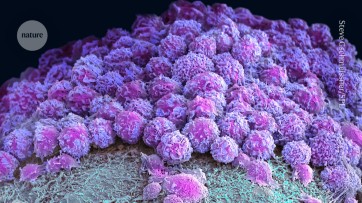
Mini-colon and brain 'organoids' shed light on cancer and other diseases

Retractions are part of science, but misconduct isn’t — lessons from a superconductivity lab

Monkeypox virus: dangerous strain gains ability to spread through sex, new data suggest
Dna from ancient graves reveals the culture of a mysterious nomadic people, atomic clock keeps ultra-precise time aboard a rocking naval ship, who redefines airborne transmission: what does that mean for future pandemics, ecologists: don’t lose touch with the joy of fieldwork chris mantegna, european ruling linking climate change to human rights could be a game changer — here’s how charlotte e. blattner.

Lethal AI weapons are here: how can we control them?

Living on Mars would probably suck — here's why
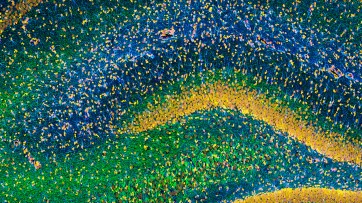
Dozens of genes are linked to post-traumatic stress disorder

What toilets can reveal about COVID, cancer and other health threats
Nato is boosting ai and climate research as scientific diplomacy remains on ice, how gliding marsupials got their ‘wings’, plastic pollution: three numbers that support a crackdown, first glowing animals lit up the oceans half a billion years ago.

Any plan to make smoking obsolete is the right step

Will AI accelerate or delay the race to net-zero emissions?

Citizenship privilege harms science
We must protect the global plastics treaty from corporate interference martin wagner, un plastics treaty: don’t let lobbyists drown out researchers, current issue.

Surprise hybrid origins of a butterfly species
Stripped-envelope supernova light curves argue for central engine activity, optical clocks at sea, research analysis.

A chemical method for selective labelling of the key amino acid tryptophan
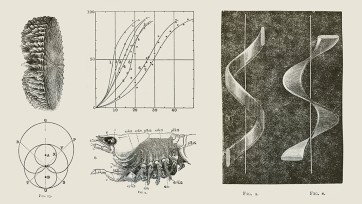
Charles Darwin investigates: the curious case of primrose punishment
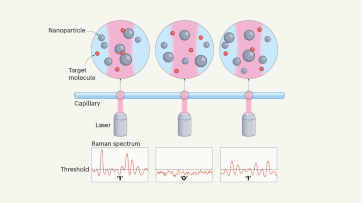
Nanoparticle fix opens up tricky technique to forensic applications
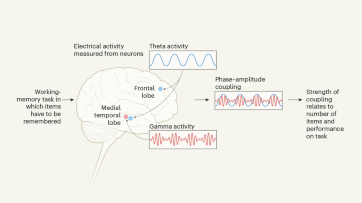
Coupled neural activity controls working memory in humans
Robust optical clocks promise stable timing in a portable package, targeting rna opens therapeutic avenues for timothy syndrome, bioengineered ‘mini-colons’ shed light on cancer progression, ancient dna traces family lines and political shifts in the avar empire.

Breaking ice, and helicopter drops: winning photos of working scientists

Shrouded in secrecy: how science is harmed by the bullying and harassment rumour mill

Londoners see what a scientist looks like up close in 50 photographs
How ground glass might save crops from drought on a caribbean island, deadly diseases and inflatable suits: how i found my niche in virology research, books & culture.

How volcanoes shaped our planet — and why we need to be ready for the next big eruption

Dogwhistles, drilling and the roots of Western civilization: Books in brief

Cosmic rentals
Las boriqueñas remembers the forgotten puerto rican women who tested the first pill, dad always mows on summer saturday mornings, nature podcast.

Latest videos
Nature briefing.
An essential round-up of science news, opinion and analysis, delivered to your inbox every weekday.
Quick links
- Explore articles by subject
- Guide to authors
- Editorial policies
Search Icon
Events See all →
Creating canopy 2024.

Various locations
Earth Week 2024

This is a campuswide week of events, lectures, and volunteer opportunities designed to educate and inspire action related to environmental justice, climate, and nature-based solutions. This year’s theme is Restore & Regenerate.
Take Our Children to Work Day

Excellence in Graduate Teaching Reception

5:00 p.m. - 6:30 p.m.
Penn Graduate Student Center, 3615 Locust Walk
Education, Business, & Law
Wharton experts on financial literacy
The april episodes of the wharton school’s faculty research podcast, ‘ripple effect,’ mark national financial literacy awareness month, where experts discuss current financial initiatives for innovation, lower-income spending behavior, and how ai may help in financial literacy challenges..

National Financial Literacy Awareness month is observed in April, and Wharton faculty have taken the opportunity to showcase their research in financial literacy, its importance, and current initiatives for innovation. “Ripple Effect,” the Wharton School ’s faculty research podcast, features four installments that cover topics from high schoolers’ financial literacy and household debt to AI’s role in finance.
In “ How a Philly financial literacy course is helping underserved high school students ,” Wharton’s David Musto , Ronald O. Perelman Professor in Finance and director of the Stevens Center for Innovation in Finance , discusses center programs that teach high school students about financial literacy, a process he says should start when people are young.
“The course that I’m talking about is Essentials of Personal Finance. … It covers the whole range of financial issues that are relevant in their lives right now, like if you are working a check-out at a store, what is coming out of your paycheck and why? What does that get you? Where’s that going? And then student loans, which are coming up for a lot of these students right away. How do those work?” Musto asks.
“It also covers some topics that are about being an educated voter. If people say the Social Security Trust Fund is running out, well, what is that? ... When different candidates say different things about that, well, what do you like? What does that mean for you?”
Musto and his class also address at the issue of financial literacy from the perspective of other cultures. “This is something that was inspired by a financial services provider who contacted the center saying, ‘I see you have English-language material, but I have potential clients who come from countries where they speak Spanish. They are adults. They do not know very much about our financial system because they just got here, and a lot of them have had negative experiences with the financial systems in the countries where they came from,” Musto explains. “So, material is aimed at that community, helping them plug into our financial system as soon as possible and not get ripped off, and to be able to send money back to their own countries.”
In “ Understanding how financial literacy affects household debt and bankruptcy ,” Sasha Indarte , an assistant professor of finance, discusses her research into the effect of social safety net programs on household debt and creditworthiness, and bias in the bankruptcy process.
“I have some ongoing research that tries to both document and understand the reason behind racial disparities and the access to the debt relief that bankruptcy provides,” Indarte says.
“It’s really difficult to get at this, so we have to use a clever bit of econometrics in order to try to say something about bias. Now, the reason that it’s challenging is when you see a disparity, this could be due to unobserved variables that we’re not controlling for. For example, if Black filers have a greater risk of losing their jobs in the future, that could make it hard for them to complete some of the requirements in Chapter 13, and that might explain some of the disparities,” explains Indarte.
“The crux of our approach to overcome this is we look at differences in the Black/white dismissal gap among Black decision-makers versus white decision-makers in the bankruptcy process. ... The idea is when we do this differencing in comparing, we can net out these omitted factors, and what we’re left with is how these two groups make decisions differently.”
In “ How AI in finance impacts financial literacy ,” Michael Roberts , the William H. Lawrence Professor of Finance, d iscusses whether generative AI can help improve financial literacy. It can, he argues, but the current models aren’t sophisticated enough to serve as standalone advisers.
“AI is financially literate by any measure in practice. From that perspective, it’s impressive. But when you ask it questions such as just broad, open-ended questions like, ‘How should I save for retirement?’ ‘What should I invest in?’—and I’m sure there are regulations or restrictions on AI from becoming an unlicensed RIA (registered investment adviser)—it really doesn’t know where to begin,” says Roberts.
“What’s critical is that I don’t see AI as just a panacea. I view it as a complement and an accelerant on our path towards financial literacy, whatever that may be, or financial proficiency. In other words, I think it’s going to be critical that people recognize that knowledge of finance and financial principles are not going to go away. They are going to be paramount in order to engage successfully with AI, wherever it may be in the future.”
And in “ Why is Financial Literacy Important? ,” Professor Olivia Mitchell argues that it should be a lifelong education because economic factors change over time, including the amount needed for retirement.
“We see financial literacy much like other kinds of education. It takes time to learn financial concepts and to apply them, and sometimes it takes money so that you can hire someone or take a course or what have you. These are the two components that are involved in investing in that college. Moreover, that knowledge can depreciate if you don’t use it over time. There are always new financial products on the market, adjustable-rate mortgages, and so forth, so that the knowledge base needs to be continually built throughout life,” Mitchell says.
“It is definitely an educational process. Many employers are now offering financial literacy training at the workplace. Why? Because they understand that their workers are suffering financial stress due to debt.”
For a full list of podcast episodes, visit the “ Ripple Effect ” website.
Picturing artistic pursuits

Campus & Community
Penn celebrates operation and benefits of largest solar power project in Pennsylvania
Solar production has begun at the Great Cove I and II facilities in central Pennsylvania, the equivalent of powering 70% of the electricity demand from Penn’s academic campus and health system in the Philadelphia area.

Investing in future teachers and educational leaders
The Empowerment Through Education Scholarship Program at Penn’s Graduate School of Education is helping to prepare and retain teachers and educational leaders.

Arts, Humanities, & Social Sciences
‘The Illuminated Body’ fuses color, light, and sound
A new Arthur Ross Gallery exhibition of work by artist Barbara Earl Thomas features cut-paper portraits reminiscent of stained glass and an immersive installation constructed with intricately cut material lit from behind.

25 years of ‘LOVE’
The iconic sculpture by pop artist Robert Indiana arrived on campus in 1999 and soon became a natural place to come together.

IMAGES
VIDEO
COMMENTS
Table of contents. Top 75 Emerging Research Topics in Electrical Engineering. 1. Power Systems and Renewable Energy. 1.1 Smart Grids and Micro-grids. 1.2 Energy Harvesting and Storage. 1.3 Electric Vehicles and Transportation. 2. Communications and Networking.
Matlab or Simulink. NS 2 or NS 3. The aforementioned are some of the simulation tools used in electronics and communication engineering. As our researchers concentrated on the student's welfare, we wanted to explain at least one of the listed simulation tools for paving your understanding better.
PhD in Electronic and Communication Topics. Electronic devices are considered as the elements that are deployed to regulate the flow of electrical currents with the system control and information processing. The diodes and transistors are denoted as the finest examples of the electronic system. While considering the size, the electronic devices ...
Advanced VLSI and Embedded Systems. Computer and AI Communication. Biomedical Electronics and Optoelectronics. RFID, Zigbee and Radio Receiver Technology. Multi and Micro Grid Design. Wearable and Mobile Devices. PhD Research Topics in Electronics and Communication has a strong trust in the magic of new study works.
The term ECE stands for Electronics and Communication Engineering and it often includes exploring, progressing and examining electronic devices, which are deployed in diverse domains. PhD Topics For Electronics and Communication are shared by our skilled writers who are in this field for more than 18+ years.
PhD candidates in Electronic Engineering research the electronic components such as semiconductors, resistors and inductors, and the devices they power. Electronic systems are near-ubiquitous in in modern industry, and your research could help promote developments in a wide range of sectors including communications, computing, healthcare ...
Recent PhD Research Topic Ideas for Electronic Engineering 2020. Exclusive for scholars pursuing their PhD in Electronics and Communication Engineering with base papers (peer-reviewed articles) Enhancement in wireless body application for the deployment of a Human Body Phantom Model. Examination of CoAP with the DTLS Protocol in the ...
Scholars focus on and apply research methods from education, learning sciences, and social-behavioral sciences to advance the success of engineering. ... Communications research at U-M is investigating the fundamental limits of performance possible in communication systems and communication networks and the practical methods of achieving close ...
Emerging Materials, Novel Circuit and System for Neuromorphic and AI Acceleration in the Big Data Era. An innovative journal that explores the increasingly pervasive role of electronics in technological innovation - from materials and devices, to circuits, systems, and electronic architectures.
The Departments of Computer Science & Engineering, Electronics & Communication Engineering and Electrical Engineering of Bipin Tripathi Kumaon Institute of Technology, Dwarahat, India are the ...
Electrical and electronic engineering is the branch of engineering that makes use of electricity. Electrical engineering concentrates on systems for generating and transmitting large electrical ...
Recent PhD Research Topic Ideas For Electronic Engineering 2020. Exclusive for scholars pursuing their PhD in Electronics and Communication Engineering with base papers (peer-reviewed articles) Energy Efficiency Examination of Comb Source Carrier-Injection Ring depend on Photonic Silicon Connection. Silicon Photonics is on Wavelength division ...
Explore the latest full-text research PDFs, articles, conference papers, preprints and more on ELECTRONICS AND COMMUNICATION. Find methods information, sources, references or conduct a literature ...
This page lists the Research Topics that characterize the PhD Program in Electrical, Electronics and Communications Engineering. The topics are here grouped by Discipline, providing a self-consistent overview where each Discipline collects faculty and PhD students belonging to specific research groups sharing the same interests. Clicking on the Discipline of your interest, you will be ...
Exclusive for scholars pursuing their PhD in Electronics and Communication Engineering with base papers (peer-reviewed articles) Evaluation of software defined Wireless architecture with micro channel based cooling.. Improvement of communication through photonic Integrated circuits by using graphene based wavelength.
The PhD Program in Electrical, Electronics and Communications Engineering involves a large number of faculty members and PhD students from various departments of Politecnico di Torino.This scientific community is active in a multi- and inter--disciplinary set of research activities, so that the specific topics that are available to prospective PhD candidates are very rich.
Strategic Elements in Electronics Communication. Antenna Design and Propagation. Channel Measurement. Interference Reduction. Energy Harvesting. Power Transfer. Collaboration Of Smart System. And also in Chipless Hybrid RFIDs. PhD research topics in Electronics Communication offer stage by stage aid in your study actions.
Our assistance extends not only with PhD Topics in Electronics and Communication Engineering it continuous to introduction, literature review, methods, results, conclusion and discussion. Get the best online help from phdservices.org and avail all our services to experience elite research experience. In terms of the latest technological ...
About The Program. The PhD programme in Electronics and Communication Engineering (ECE) is a research-based programme. The research can be in any of the broad areas in ECE. The core strength of the institute is currently in the following core areas: signal/speech /image processing, VLSI and embedded systems, robotics, and communications.
This list of electronics research paper topics provides the list of 30 potential topics for research papers and an overview article on the history of electronics. 1. Applications of Superconductivity. The 1986 Applied Superconductivity Conference proclaimed, ''Applied superconductivity has come of age.''. The claim reflected only 25 ...
PHD RESEARCH TOPIC IN ELECTRONICS AND COMMUNICATION is colossal area due to the development-of-communication with technology. Both are important fields in modern engineering which gains much importance due to its need in real life. It is the field that utilizes science and maths to solve the practical problems that arises during-communications.
PhD Projects in Electronics and Communication Engineering presented for researchers those who put themselves in research. We are the journal member in 500+ top international journals (IEEE, Springer, ACM, ScienceDirect, also Elsevier, etc.). Communications Electronics is the specialized field concerned with the use of electronic devices and ...
PhD projects in Electronics and Communication give a clear vision for the rookies in a project. This system will link the pupils in this world regardless of their places. We have given a list of the newest issues in this area. CRUCIAL RESEARCH TOPICS. Wireless Power Generation and Transmission; 5G-Massive MIMO Communication; RF-based Energy ...
Find breaking science news and analysis from the world's leading research journal.
Yet studying or researching population aging is not part of the curriculum available to most college undergraduates, says Kohler. He and colleagues Norma B. Coe and Rachel M. Werner of the Perelman School of Medicine responded by creating the Get Experience in Aging Research Undergraduate Program, or GEAR UP. The initiative is run by the Population Aging Research Center (PARC), which Kohler ...
The April episodes of the Wharton School's faculty research podcast, 'Ripple Effect,' mark National Financial Literacy Awareness month, where experts discuss current financial initiatives for innovation, lower-income spending behavior, and how AI may help in financial literacy challenges. Image: iStock/Wavebreakmedia.